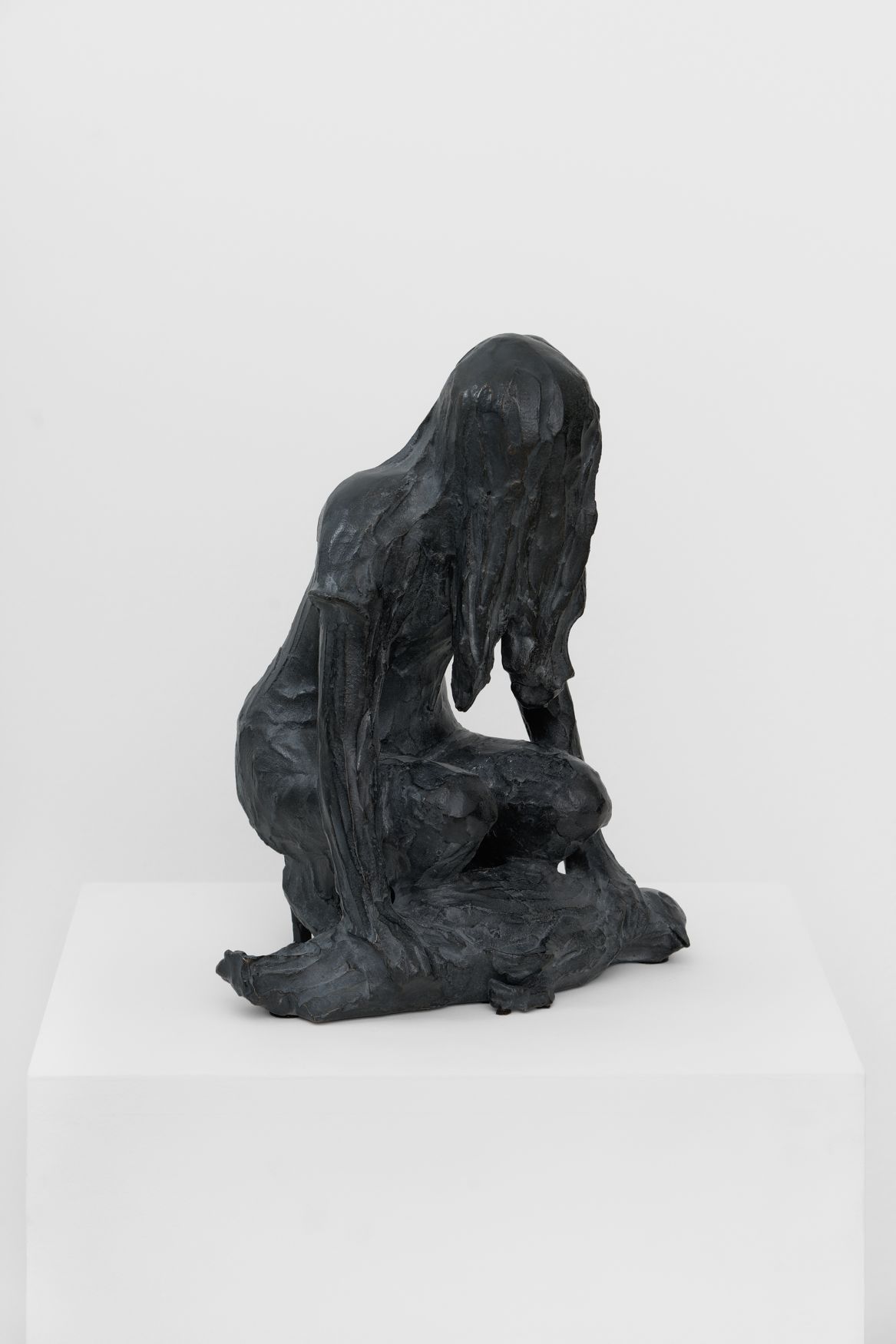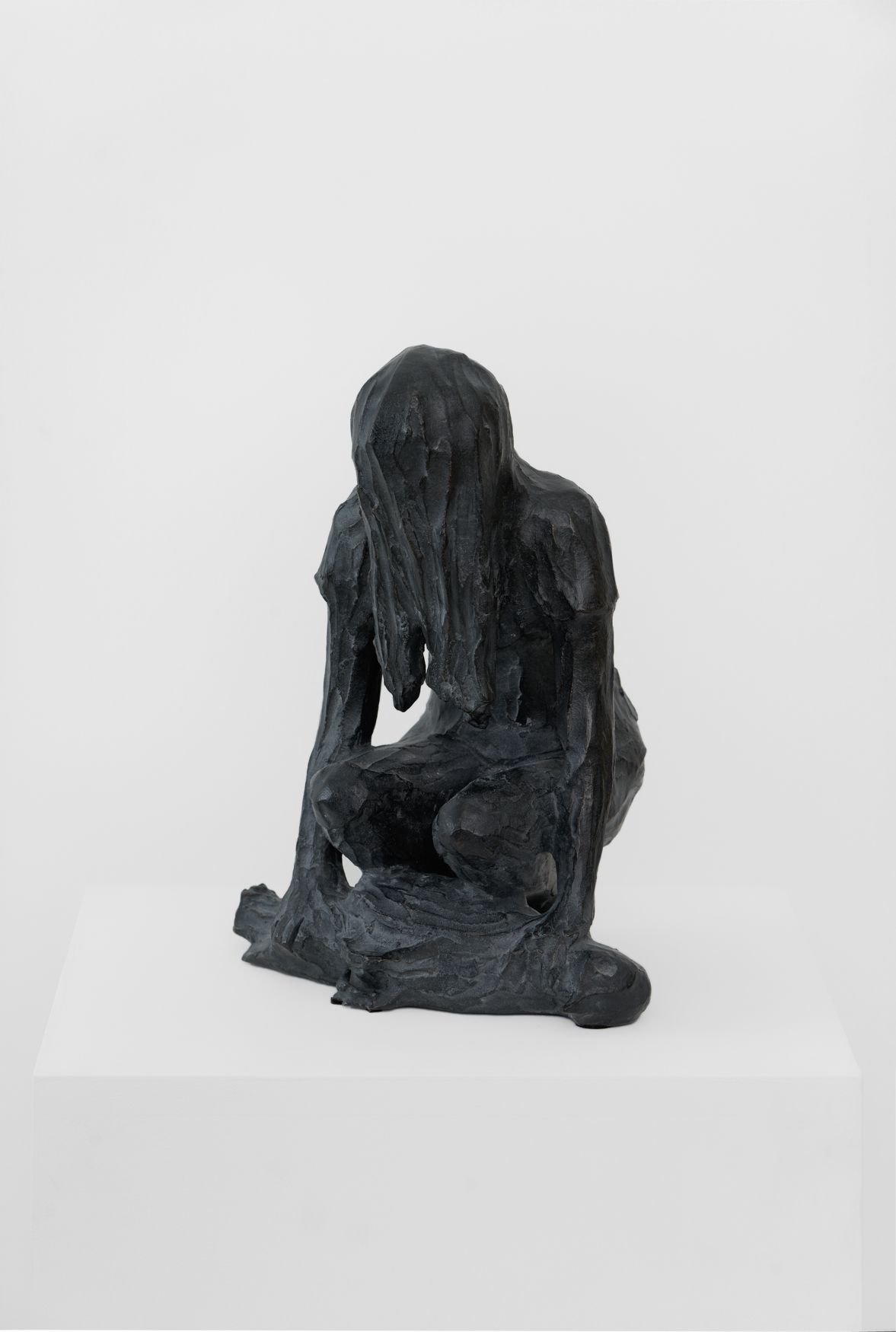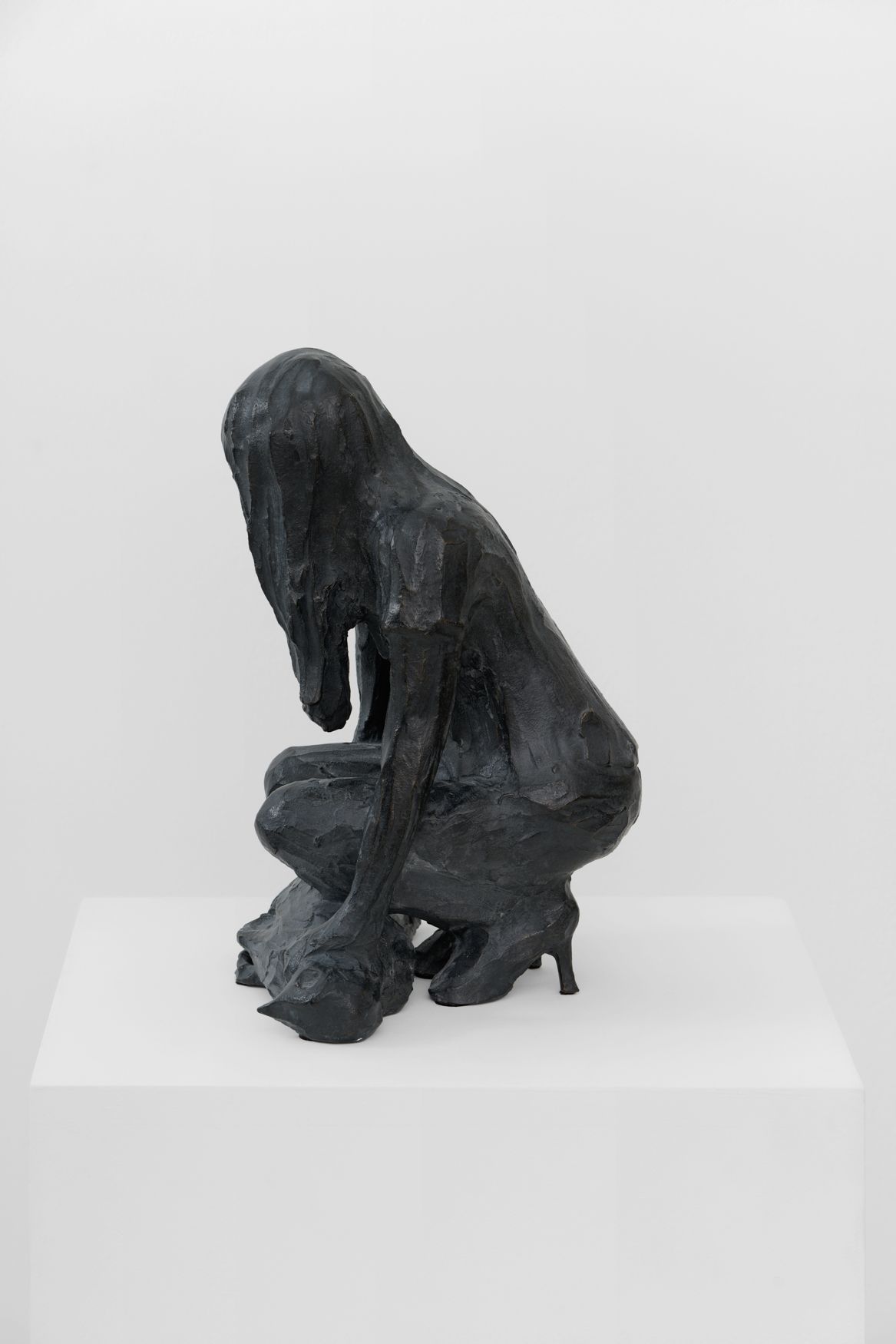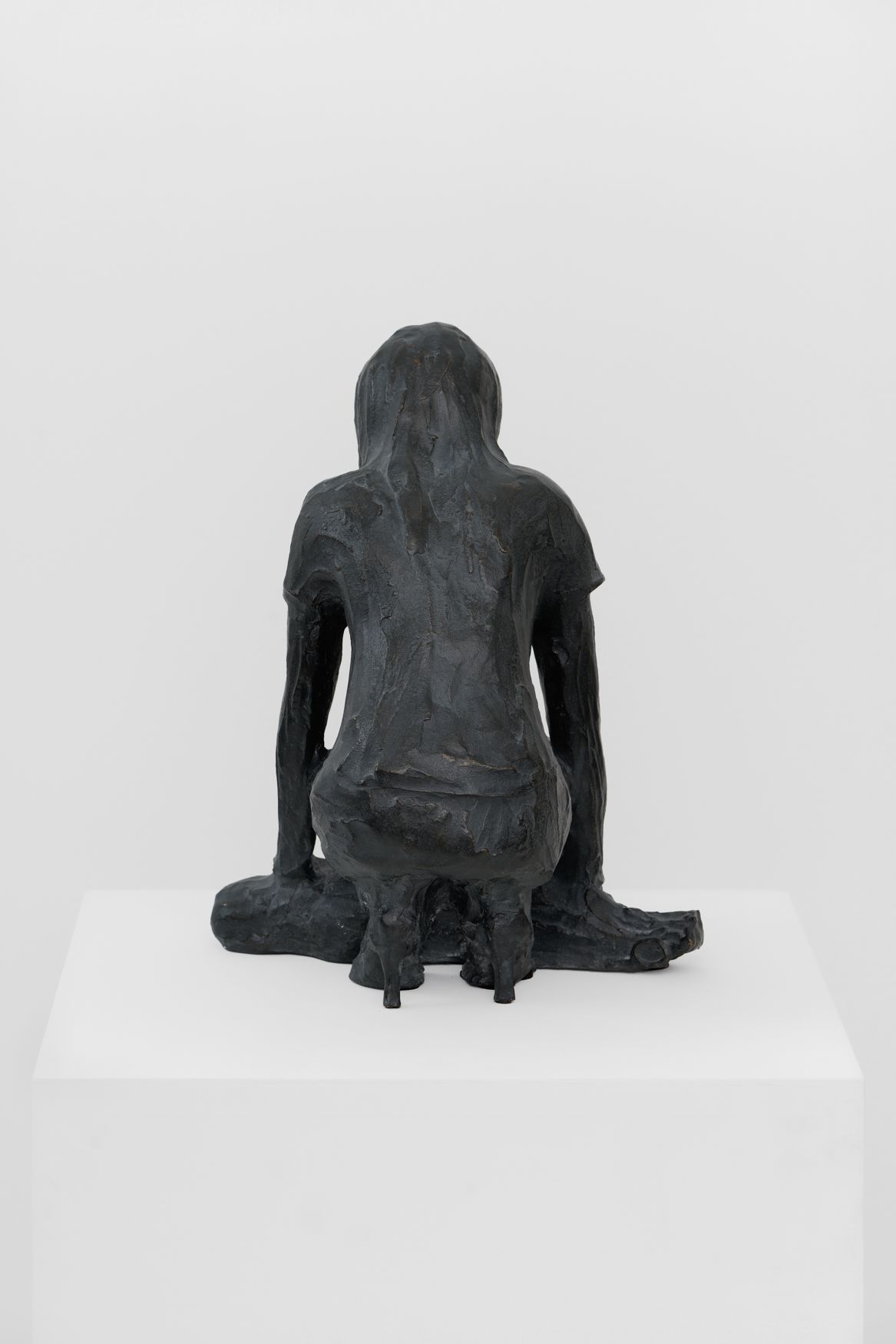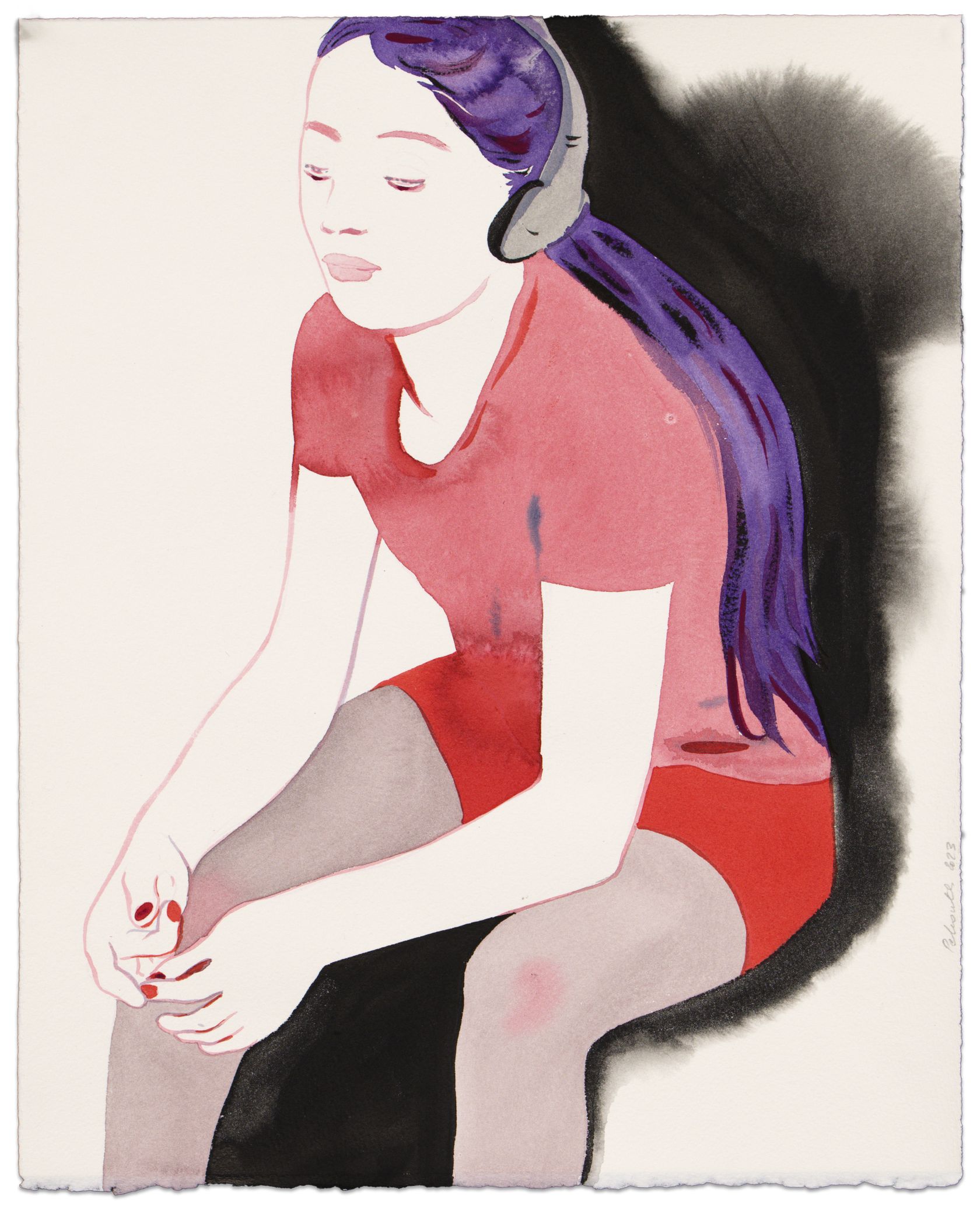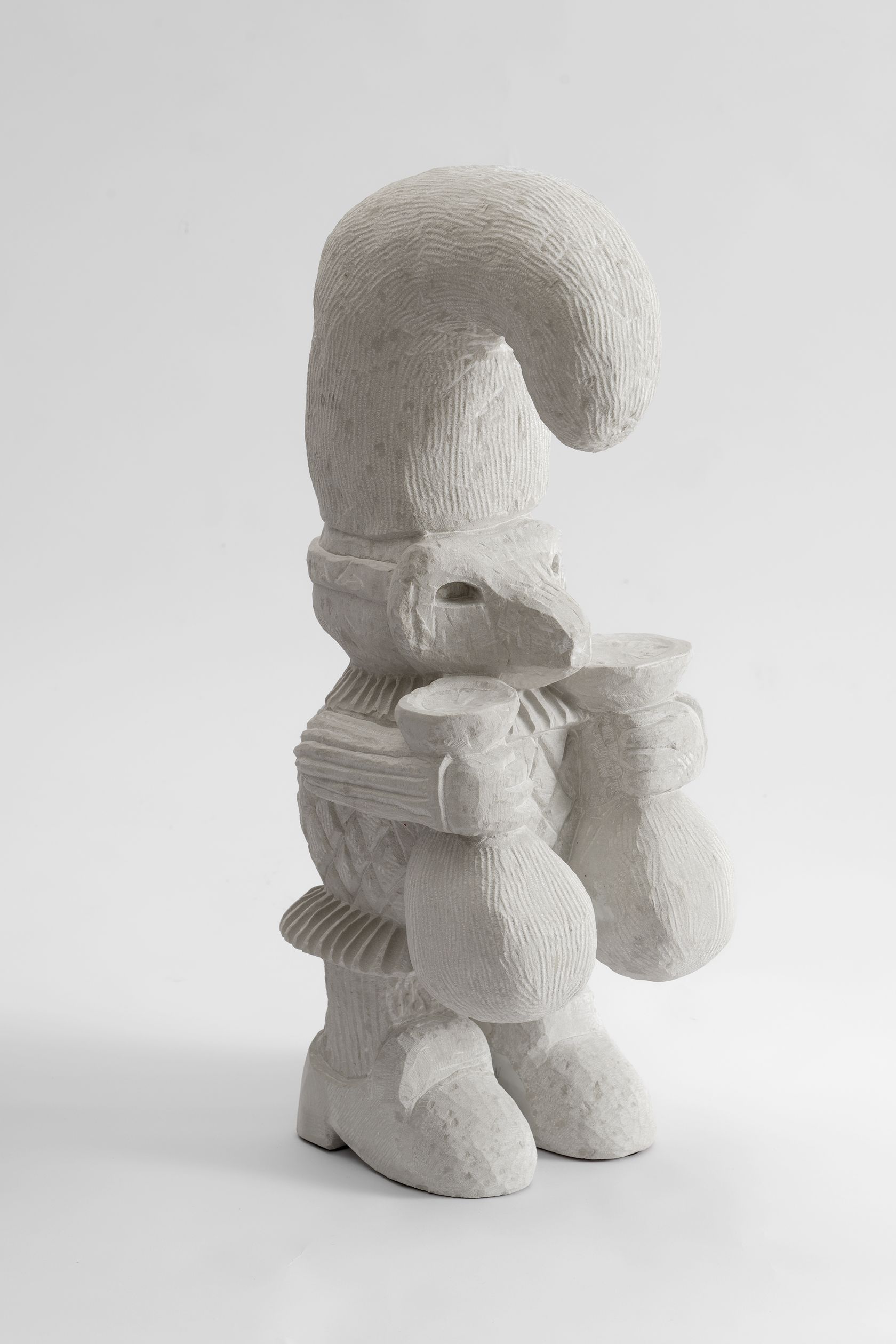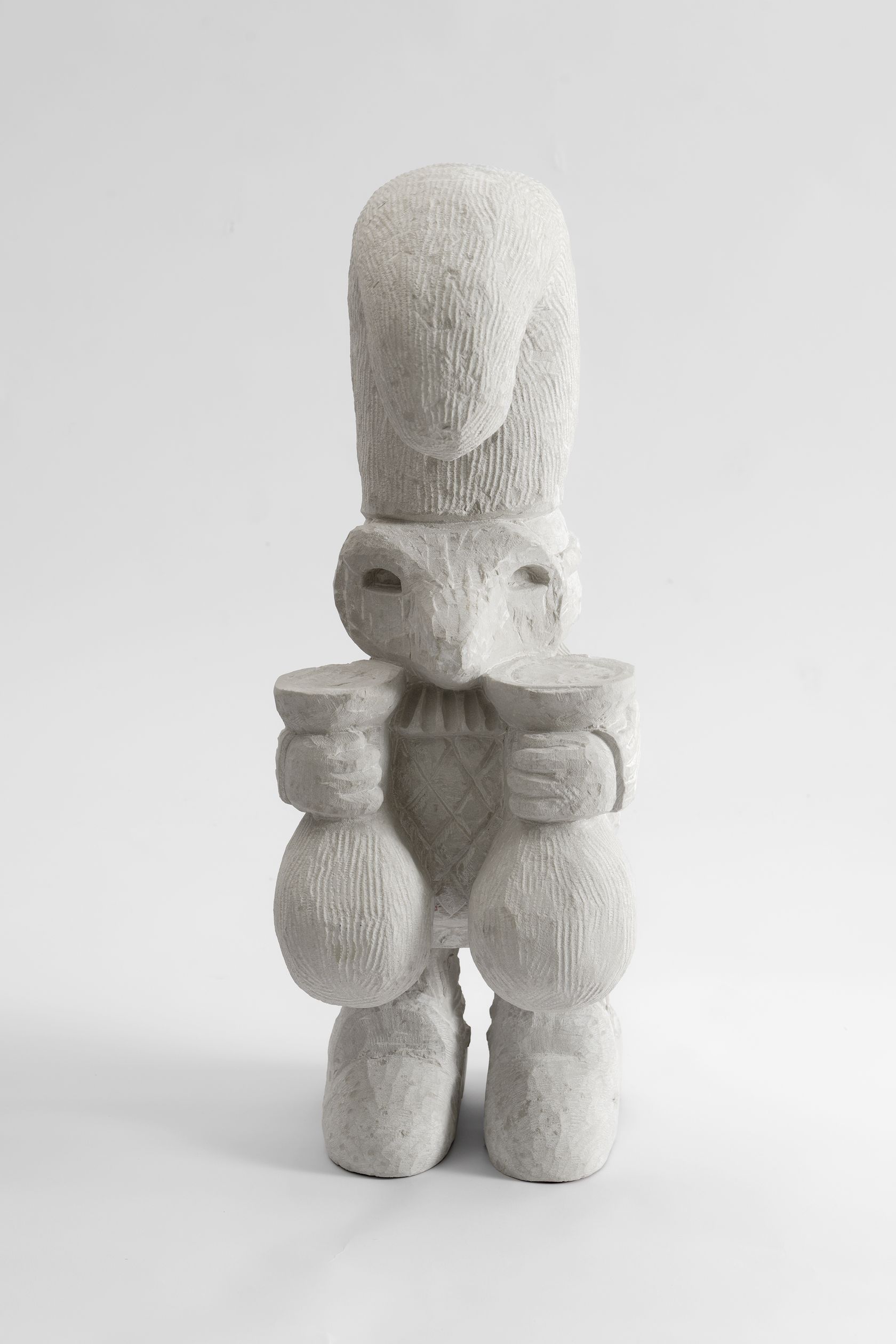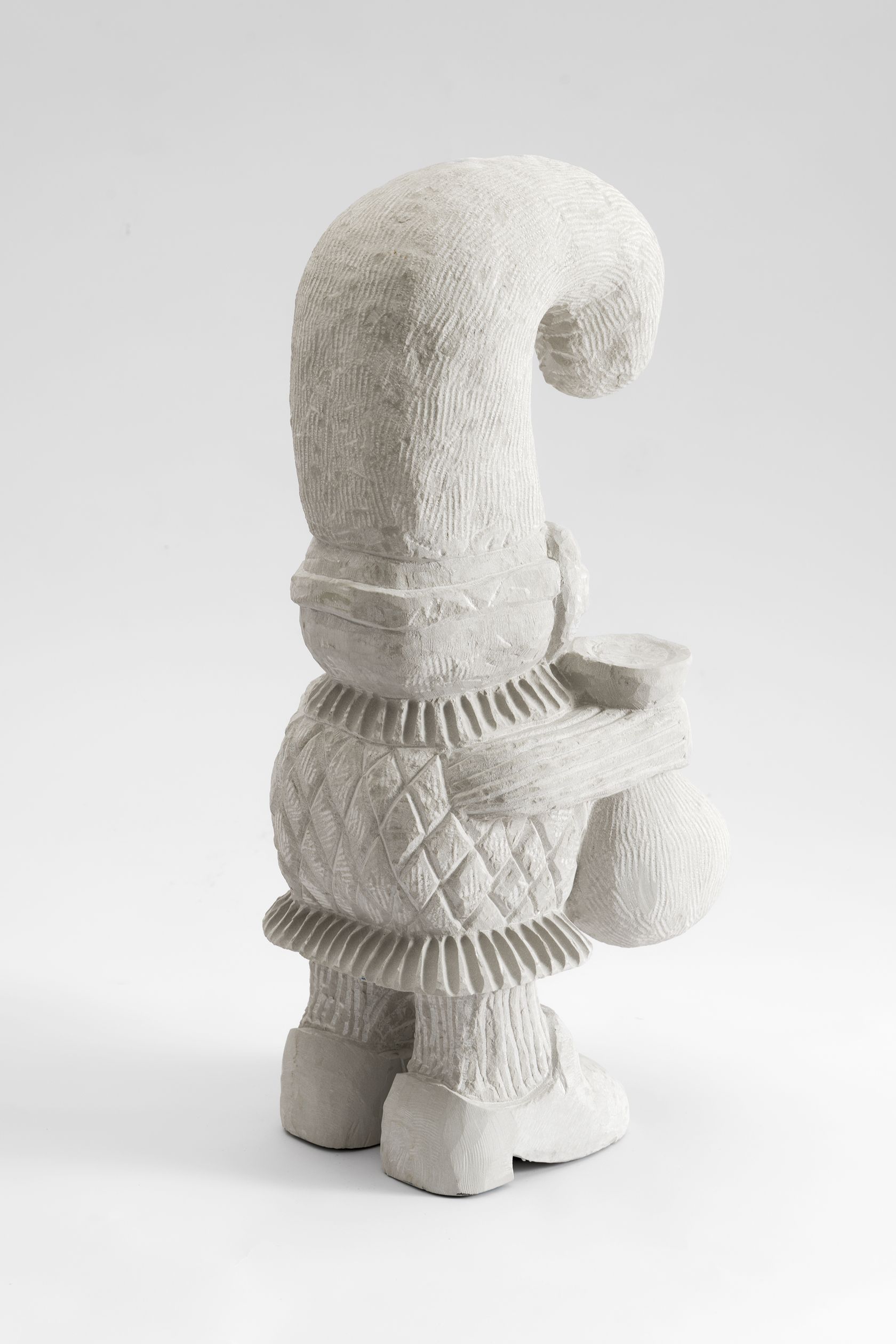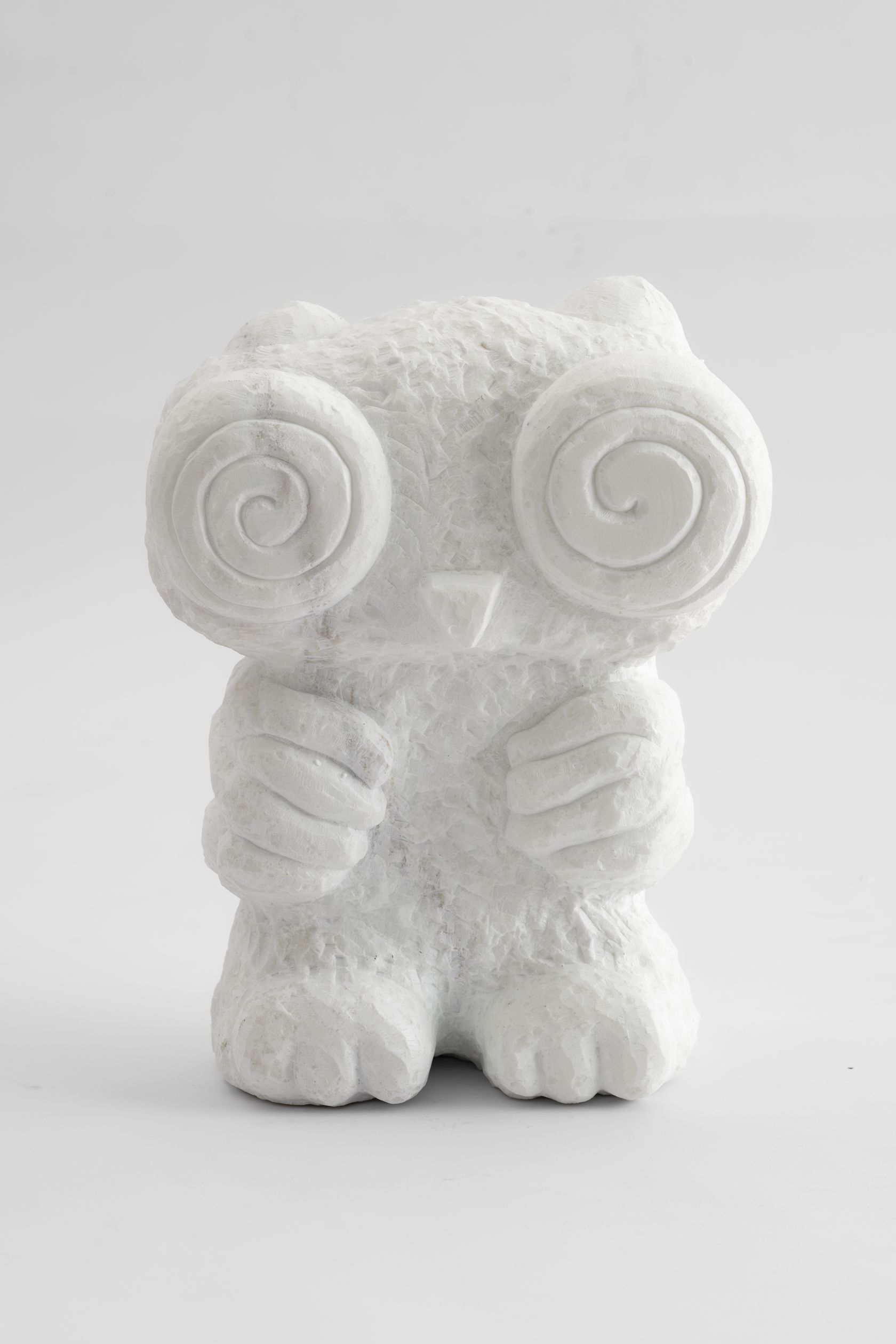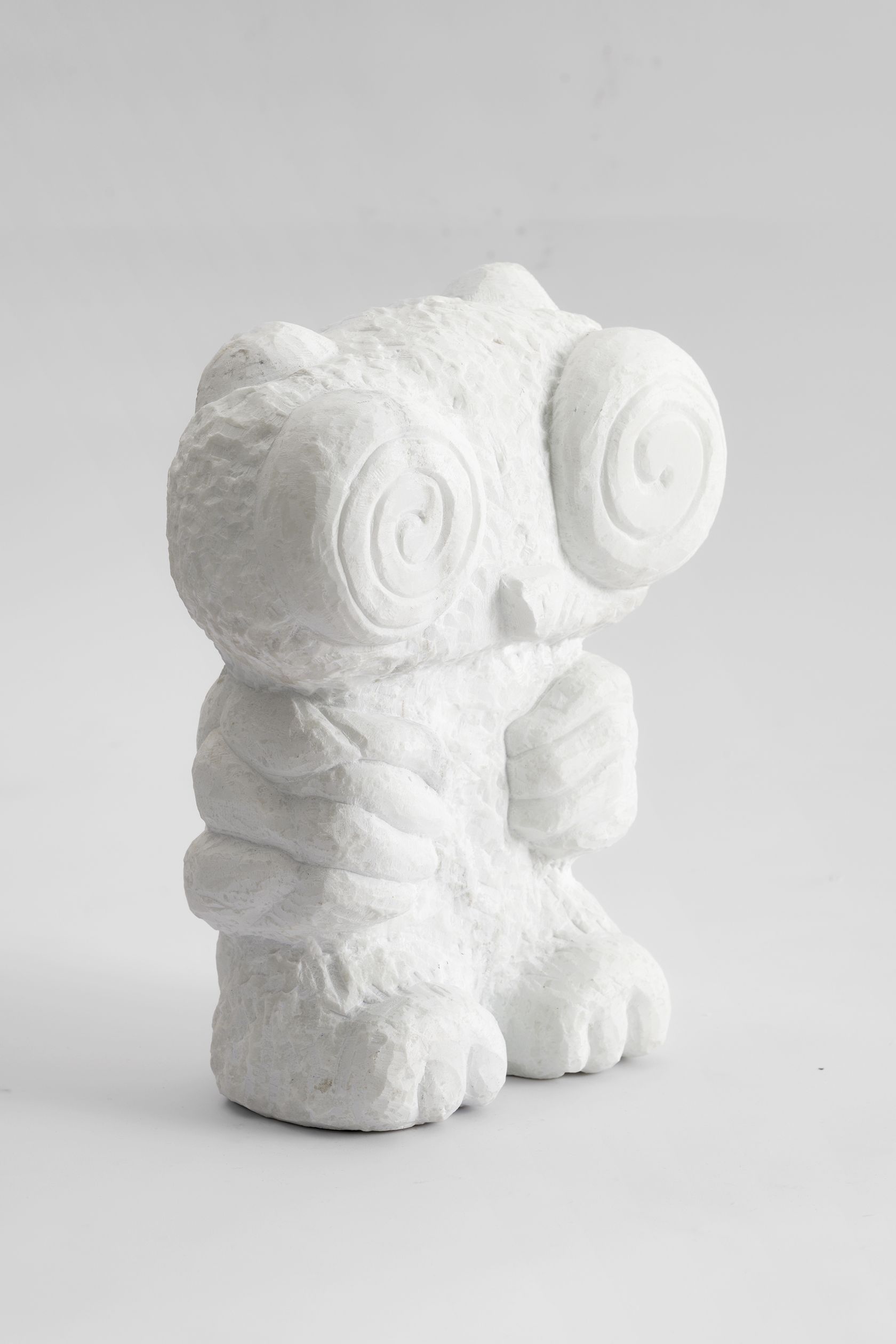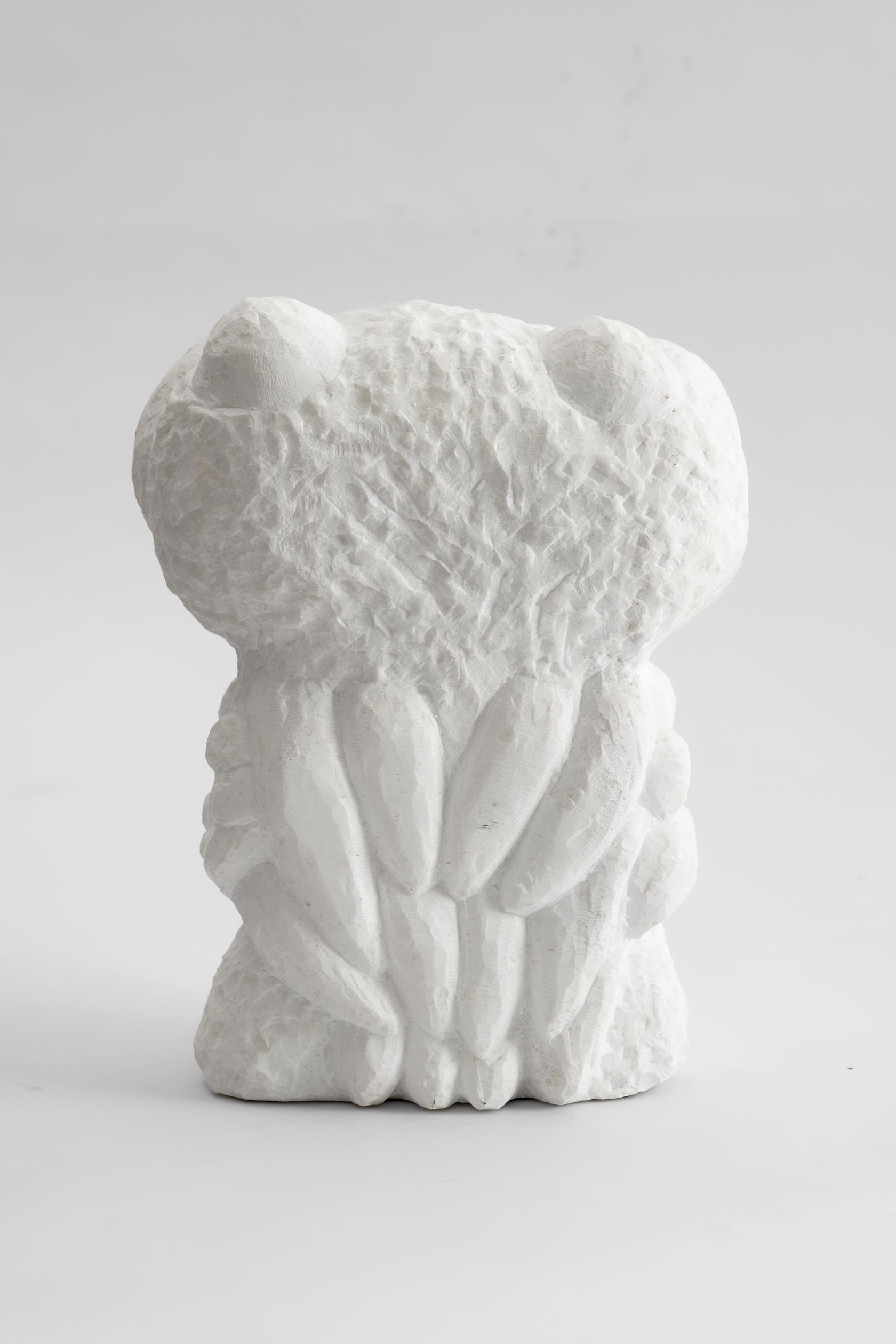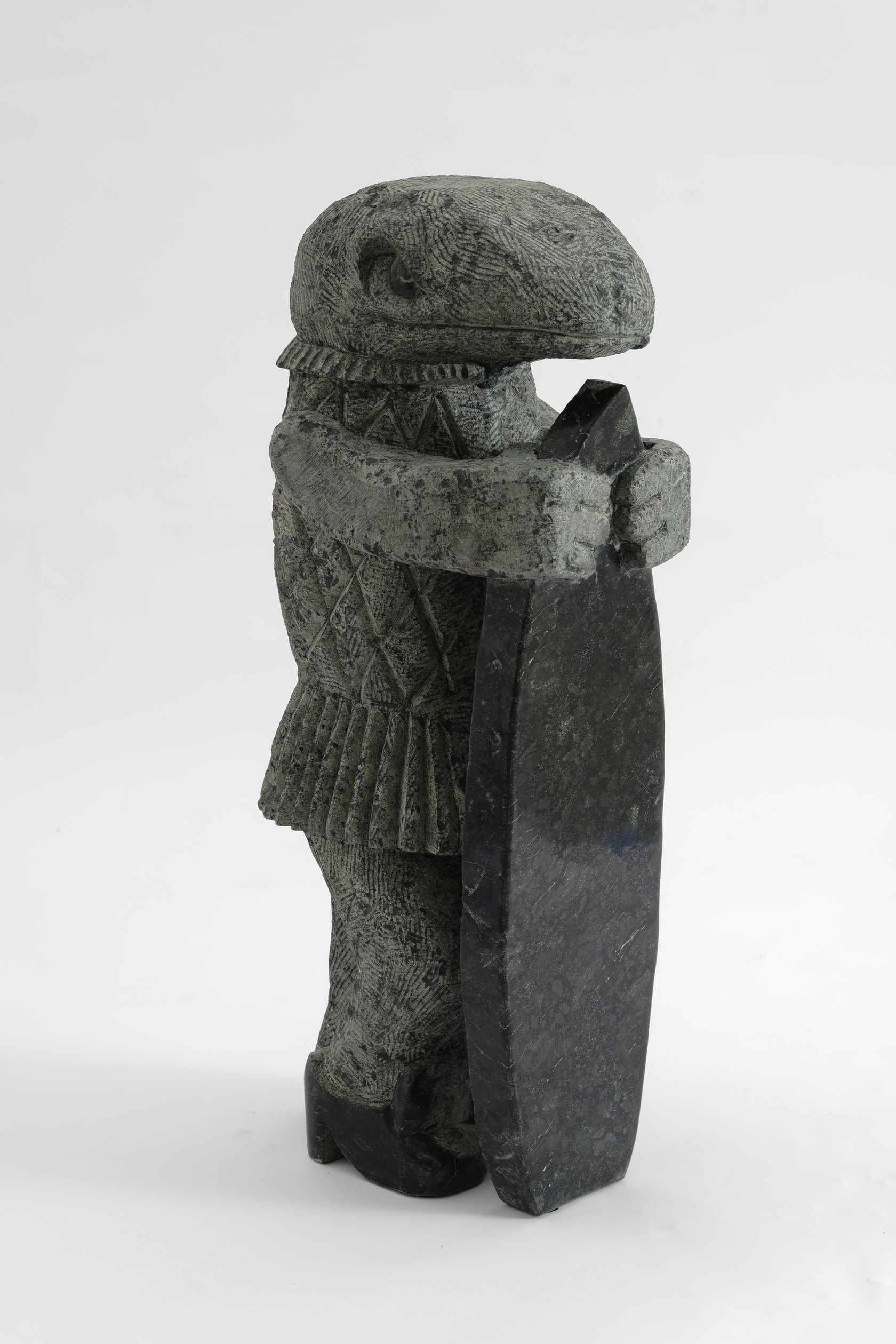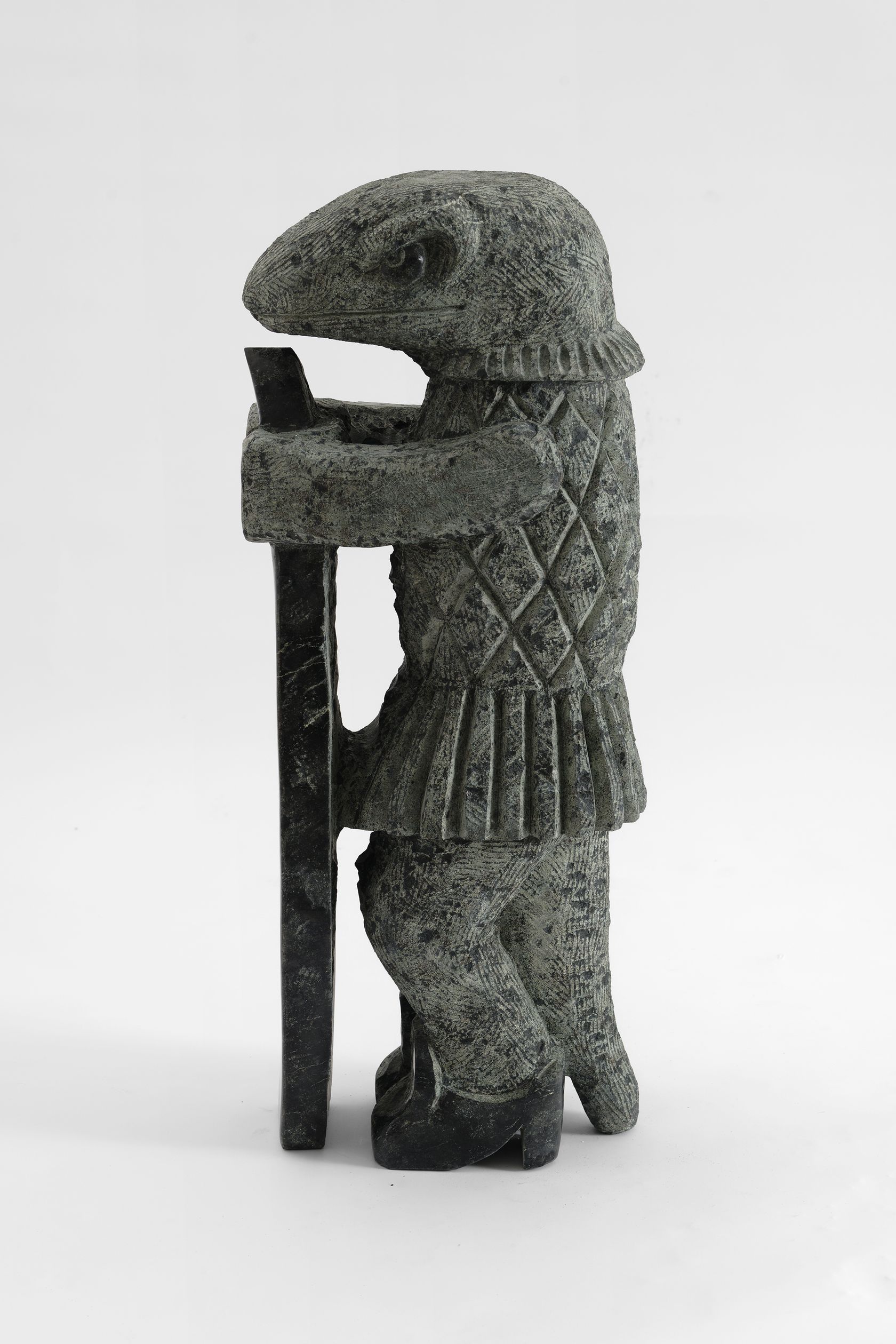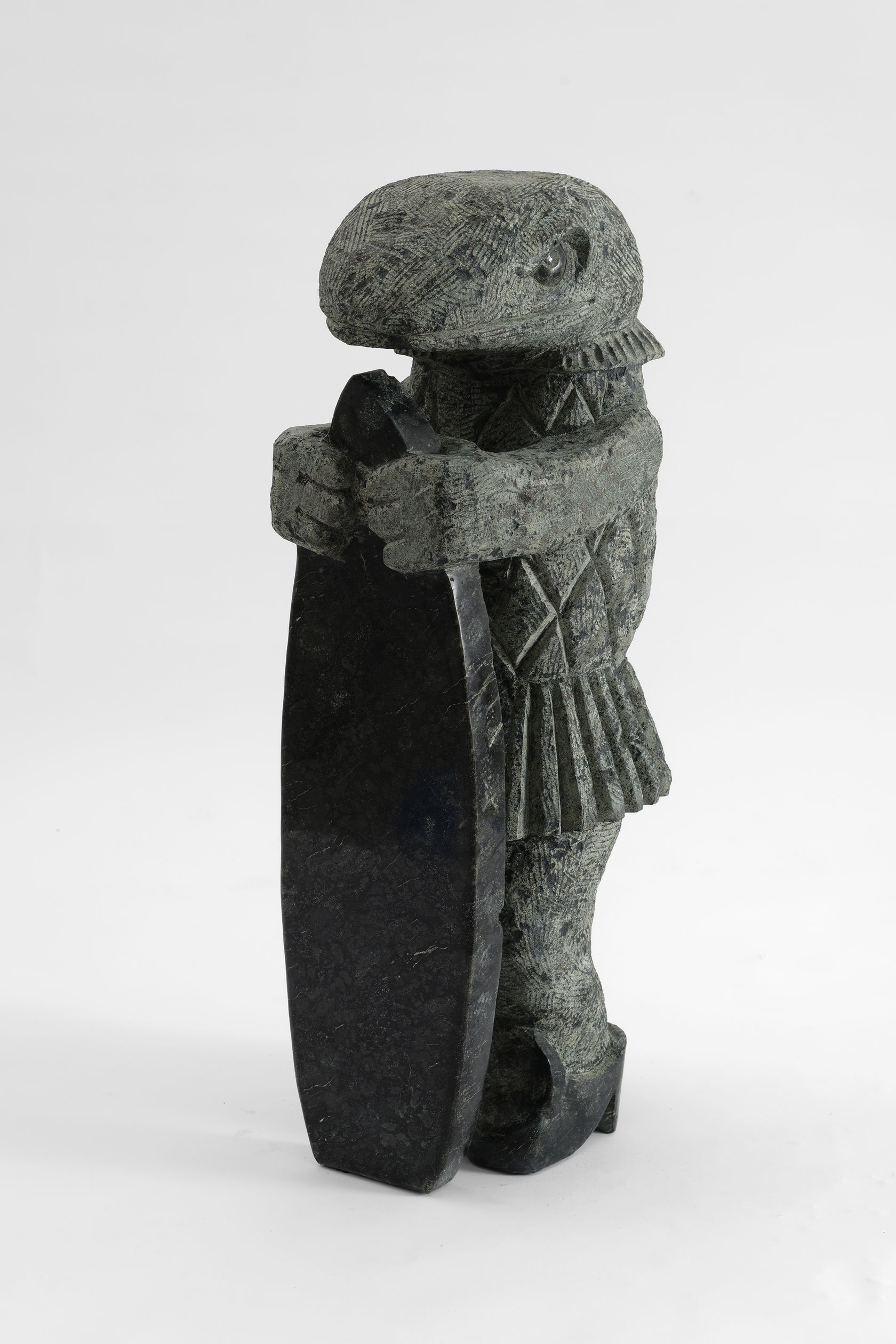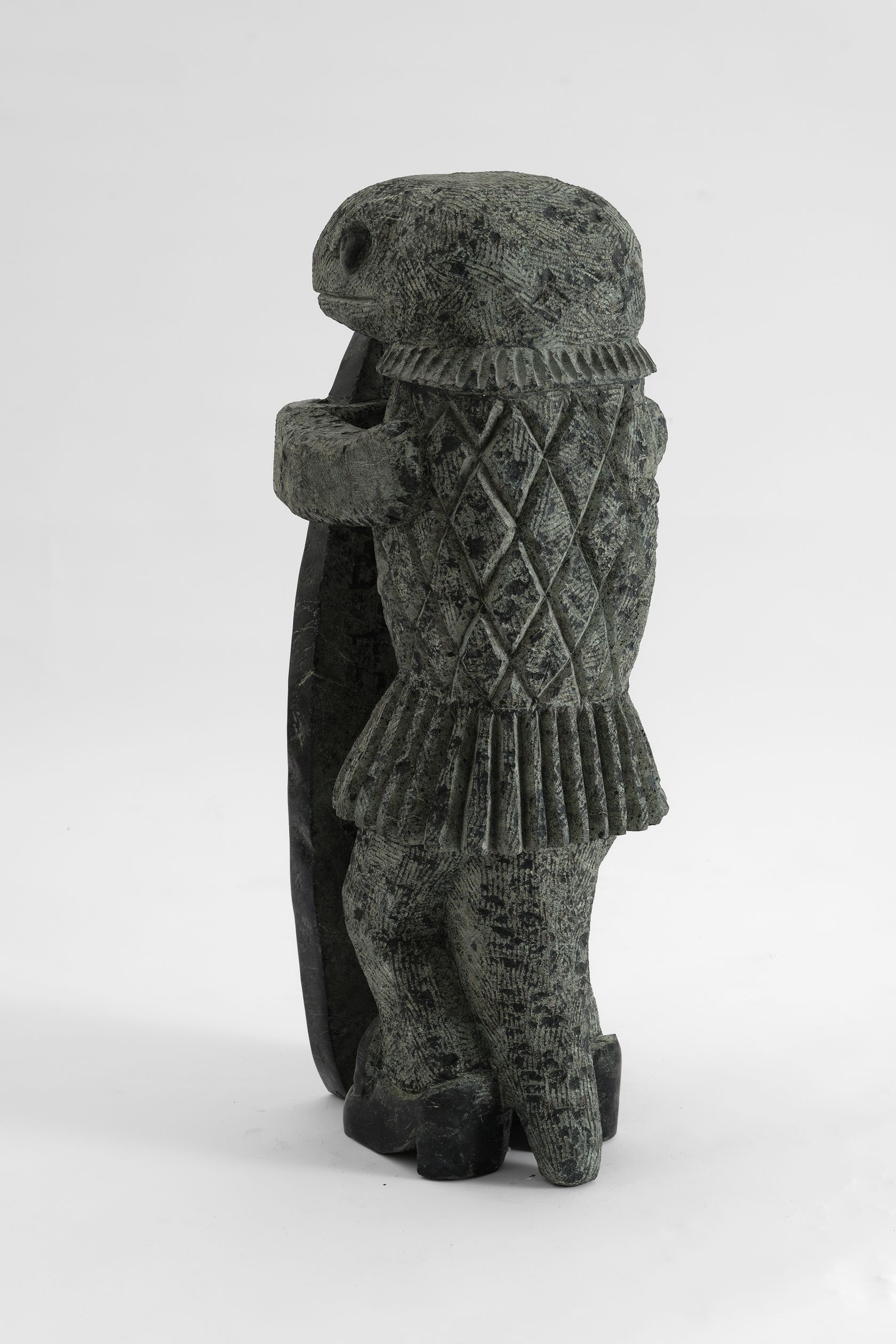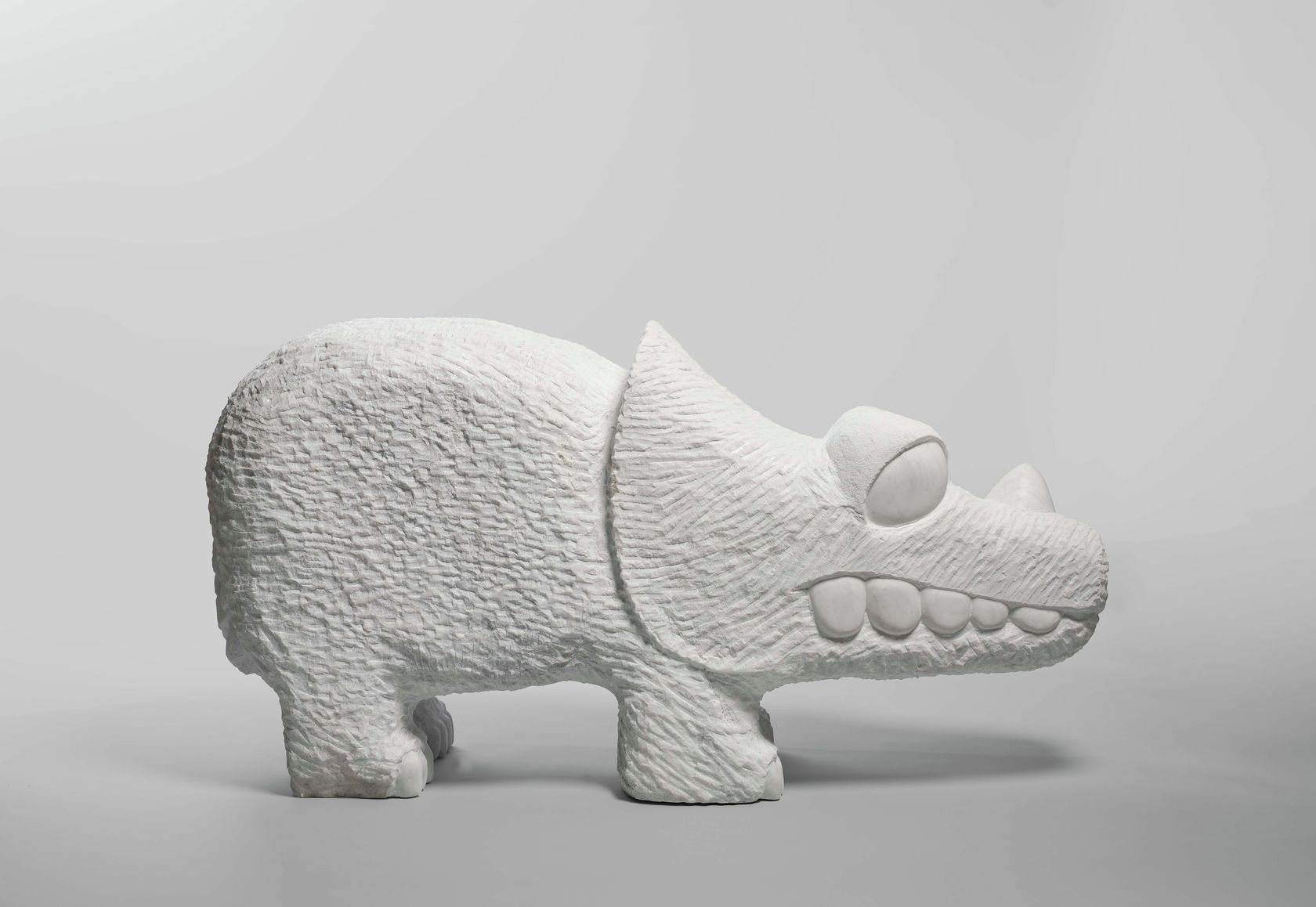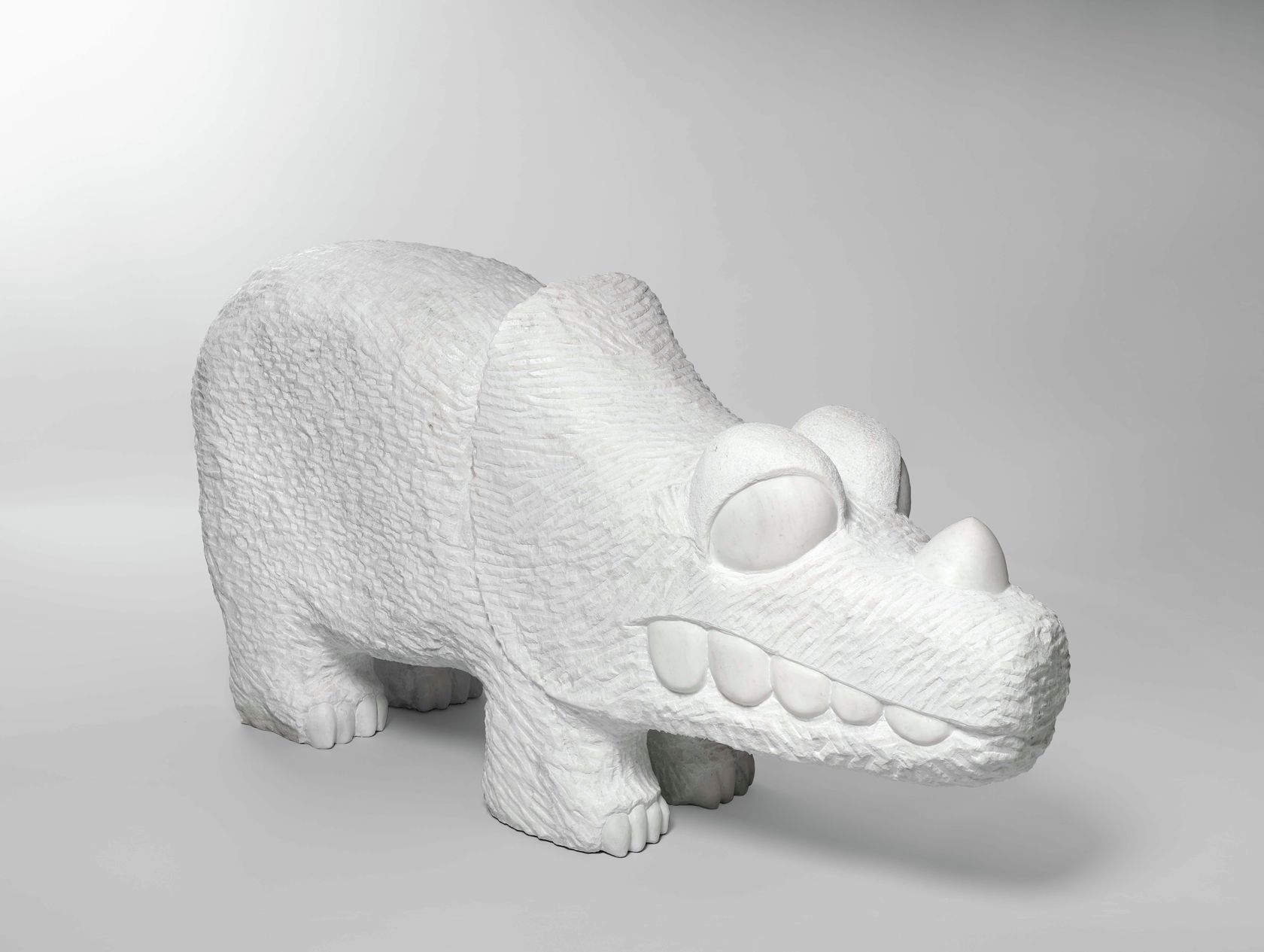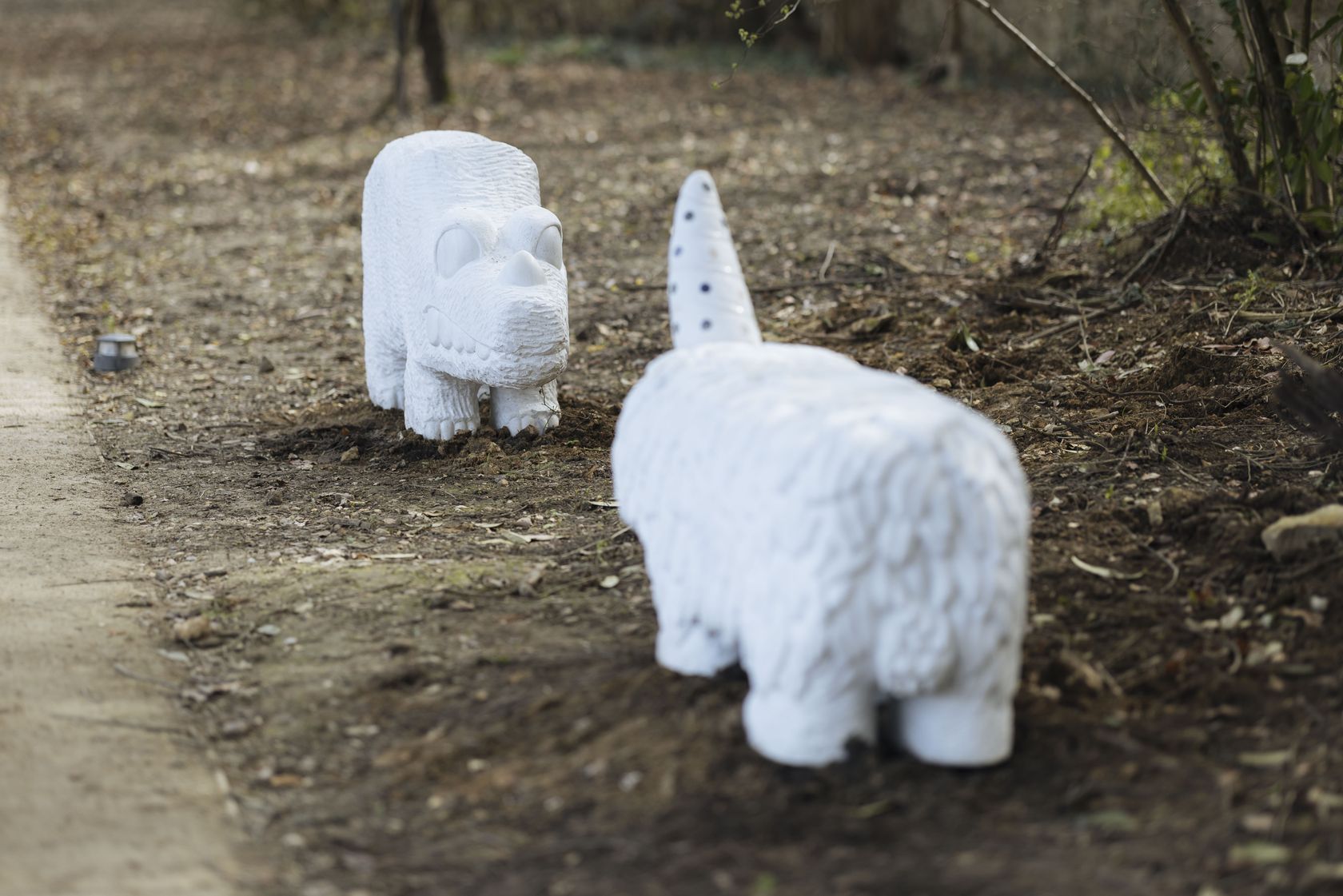To learn more about available works, please provide your contact information
Justin Liam O’Brien is a narrative painter. His works portray characters, mainly male, within spaces inspired by the artist’s everyday life as well as historical painting. The artist delights in depicting the ambivalence of intimate emotions, often at bursting point or in the second after the explosion. He explores the psychological dimension of the relationship between bodies and architecture, where an individual is depicted in the solitude of an apartment or perhaps multiplied in the setting of a crowd. Justin Liam O’Brien’s very particular style of painting is immediately recognizable through its rounded forms, typical of the computer software he used as a 3D animator. His characters often bear the features of the artist himself or his family members and close friends, whereas the curvaceous lines and smooth skin of their bodies, painted in flat color tints, using a bold palette, with very few effects apart from the use of subtle color gradients, evoke the architypes of classical painting. The compositions condensed within the paintings and the rounded perspectives generate a claustrophobic and disorienting effect. As part of a lineage of Queer artists, O’Brien explores the subjects of identity, isolation, sadness and humor, set in a changing world.
Justin Liam O’Brien was born in 1991 in Flushing, New York and lives and works in Brooklyn. After graduating from the Pratt Institute in 2016, his work was exhibited at the Richard Heller gallery in Los Angeles and the Monya Rowe gallery in New York. He also participated in a group show on the subject of the self-portrait, curated by Sasha Bogojev at High Line Nine in New York. He has featured in articles in Elephant Magazine, Artforum and Juxtapoz.
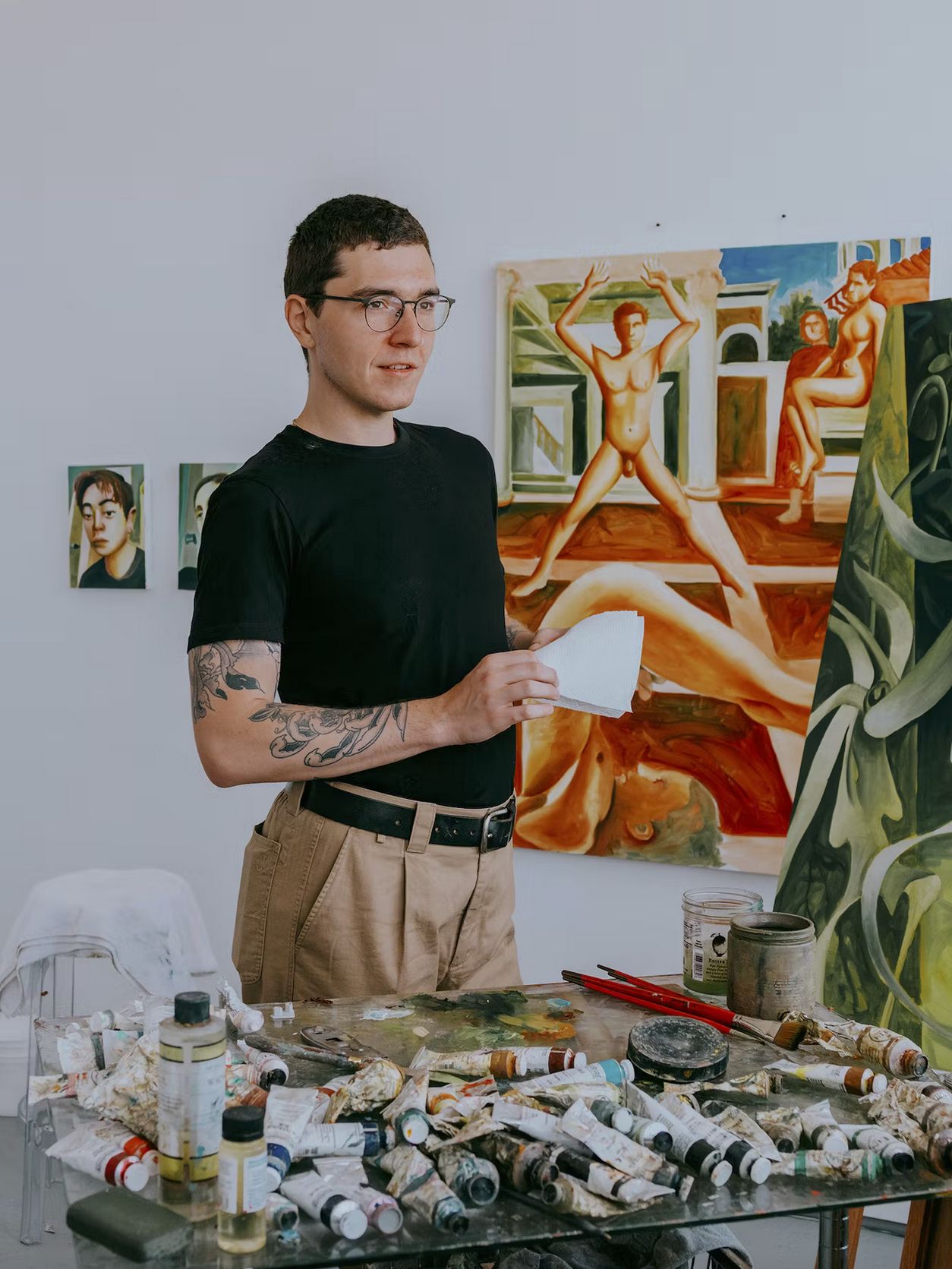
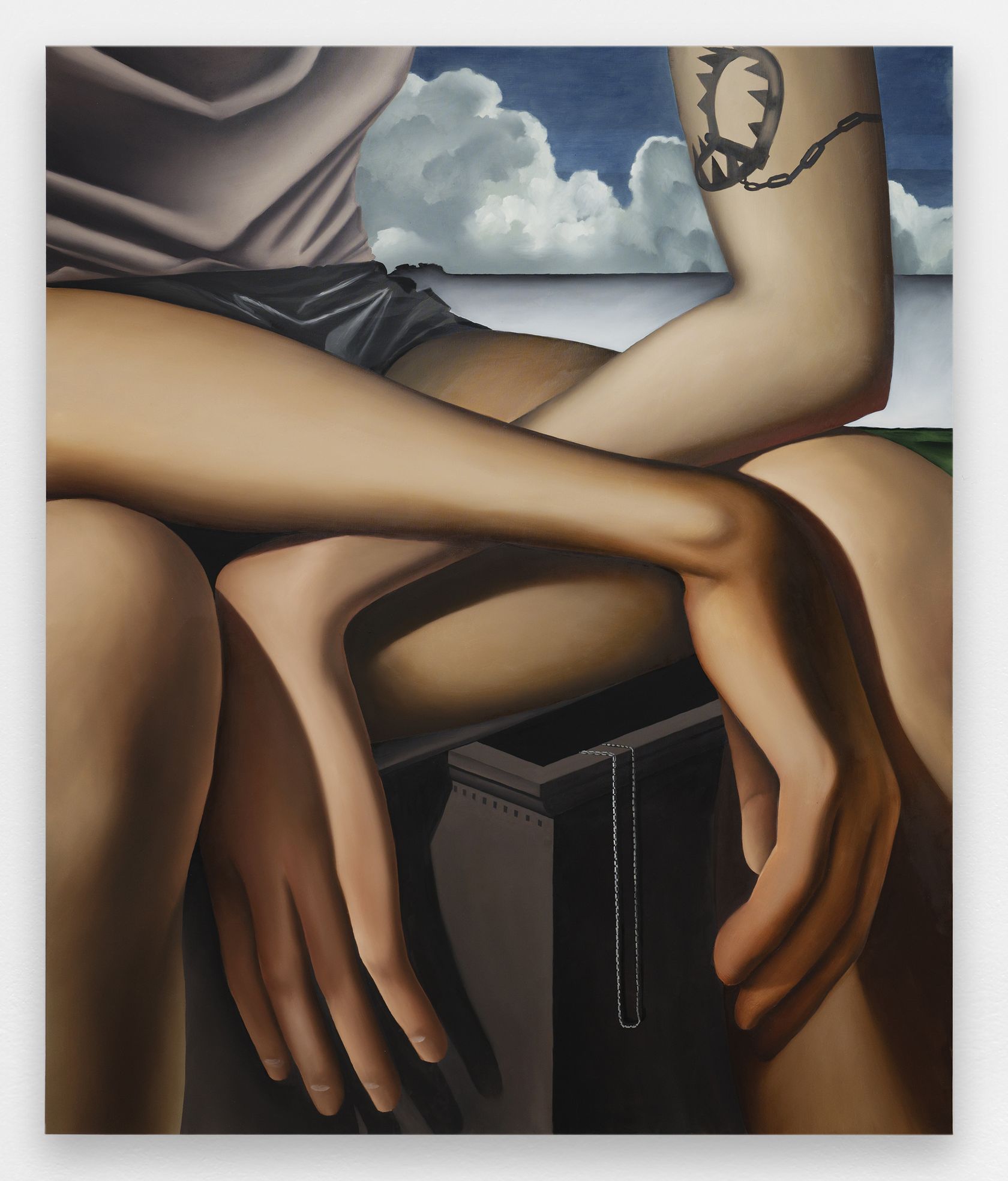
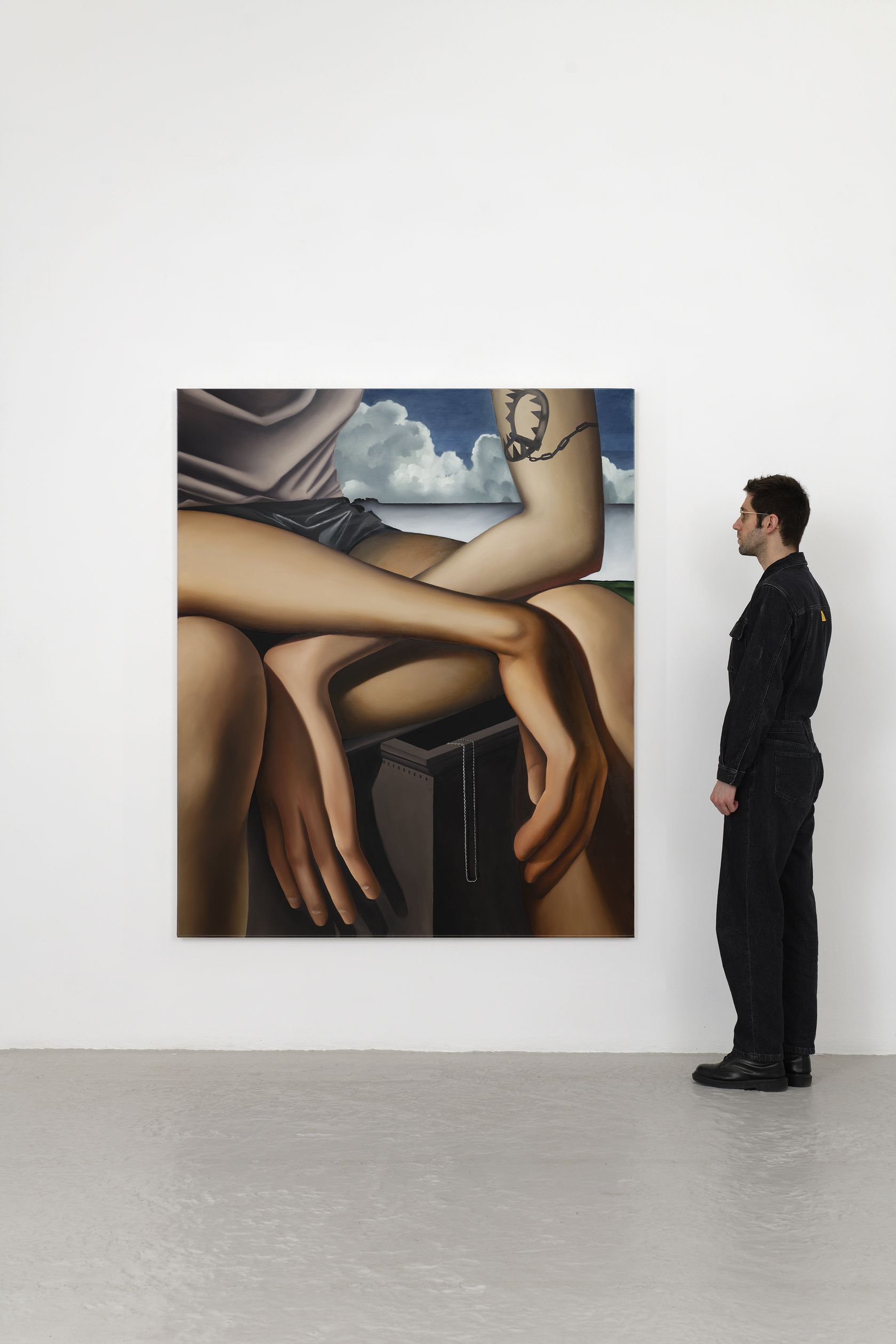
- Justin Liam O’Brien
- Snare , 2023
- Oil on linen
-
- 183 ×
- 152.5 ×
- 3.3 × cm
- 72 ×
- 60 ×
- 1 5/16 × inches
- unframed
- 187.5 ×
- 157 ×
- 5 × cm
- 73 13/16 ×
- 61 13/16 ×
- 1 15/16 × in
- framed
Since the 1990s, Françoise Pétrovitch has produced one of the most powerful bodies of work on the French art scene. Amongst the numerous media she has explored—ceramics, glass, ink washes, painting, print and video—drawing retains pride of place. In constant dialog with the artists who have preceded her, she has been able to measure herself against the incontrovertible motifs of “high art”—Saint Sebastian, still lifes, etc. Pétrovitch’s art reveals an ambiguous world, willingly transgressive, playing with conventional boundaries and eluding any interpretation. Intimacy, fragments of life and disappearance, alongside the themes such as the double, transition and cruelty run through her work, which is inhabited by animals, flowers and beings, and whose atmosphere fluctuates between light and dark, rarely leaving the spectator unmoved.
She has enjoyed numerous solo exhibitions both in France and abroad, as in the Fonds Hélène et Édouard Leclerc in Landerneau and the Bibliothèque nationale de France, Paris, in 2022, and the Musée de la Vie romantique, Paris, in 2023. In 2018, she was the first contemporary artist to be awarded a solo exhibition at the Louvre-Lens. Over the past few years, Pétrovitch has produced monumental wall drawings and large format ensembles, for the Galerie des Enfants at the Centre Pompidou, the West Bund Museum, Shanghai, or for the Ballets du Nord Company. Her works are included in many private and public collections, most notably the Centre Pompidou, Paris (FR), the Voorlinden Museum, Wassenaar (NL), the National Museum of Women in the Arts, Washington D.C. (US), the Musée Jenisch, Vevey (CH), the Musée d’Art Moderne et Contemporain of Saint-Etienne (FR) and of Strasbourg (FR), the MAC VAL (FR) and numerous regional art centers throughout France as well as the Salomon and Guerlain Foundations.
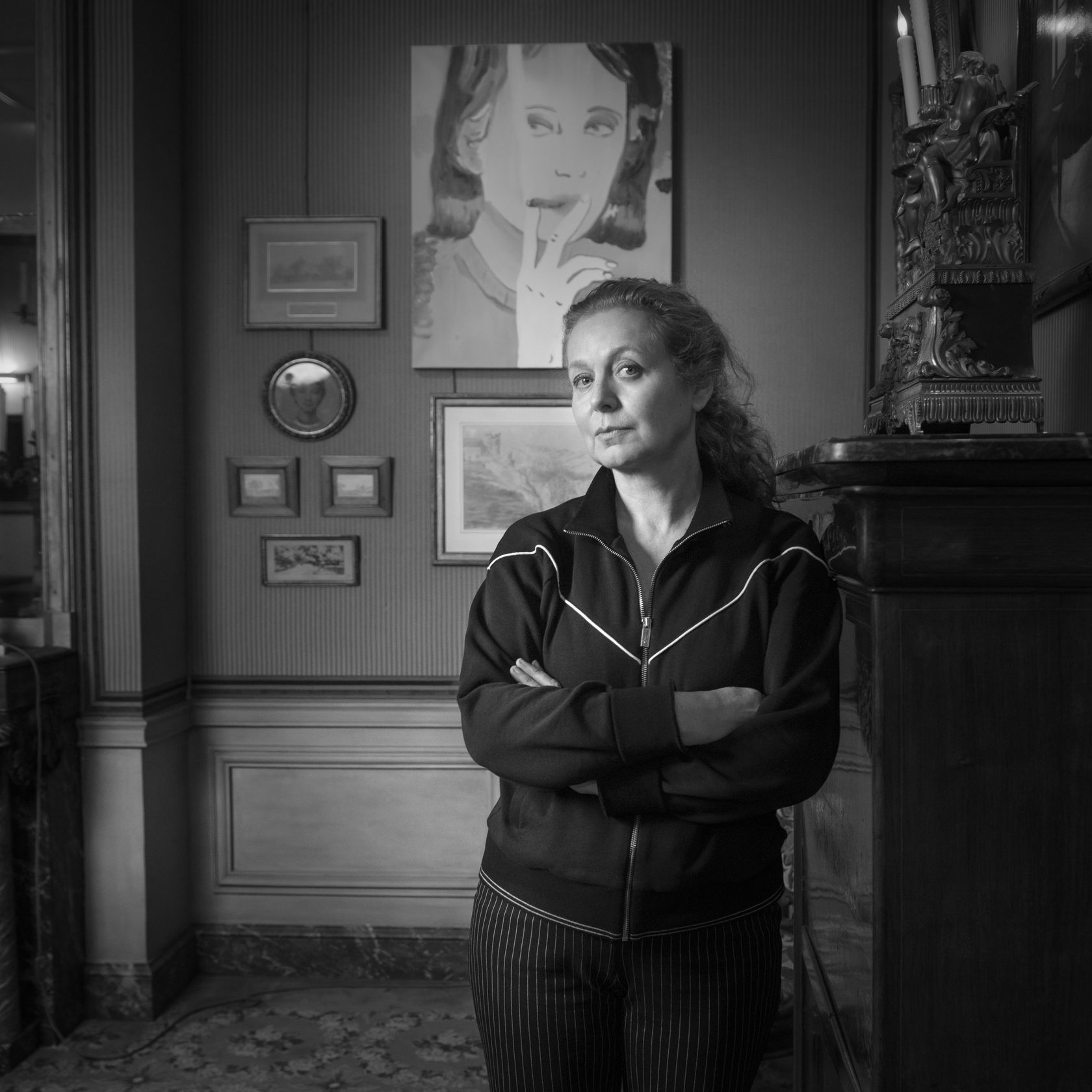
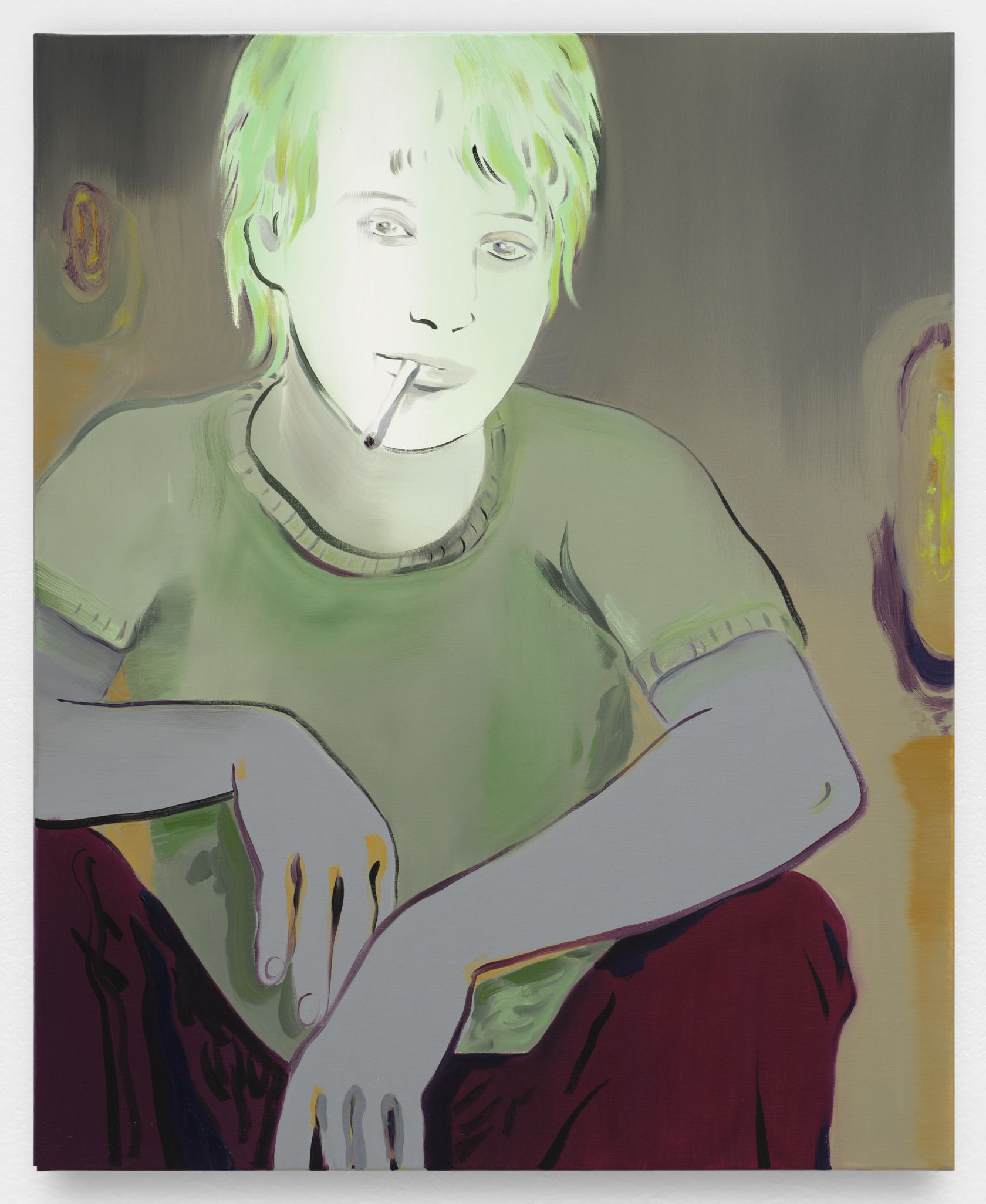
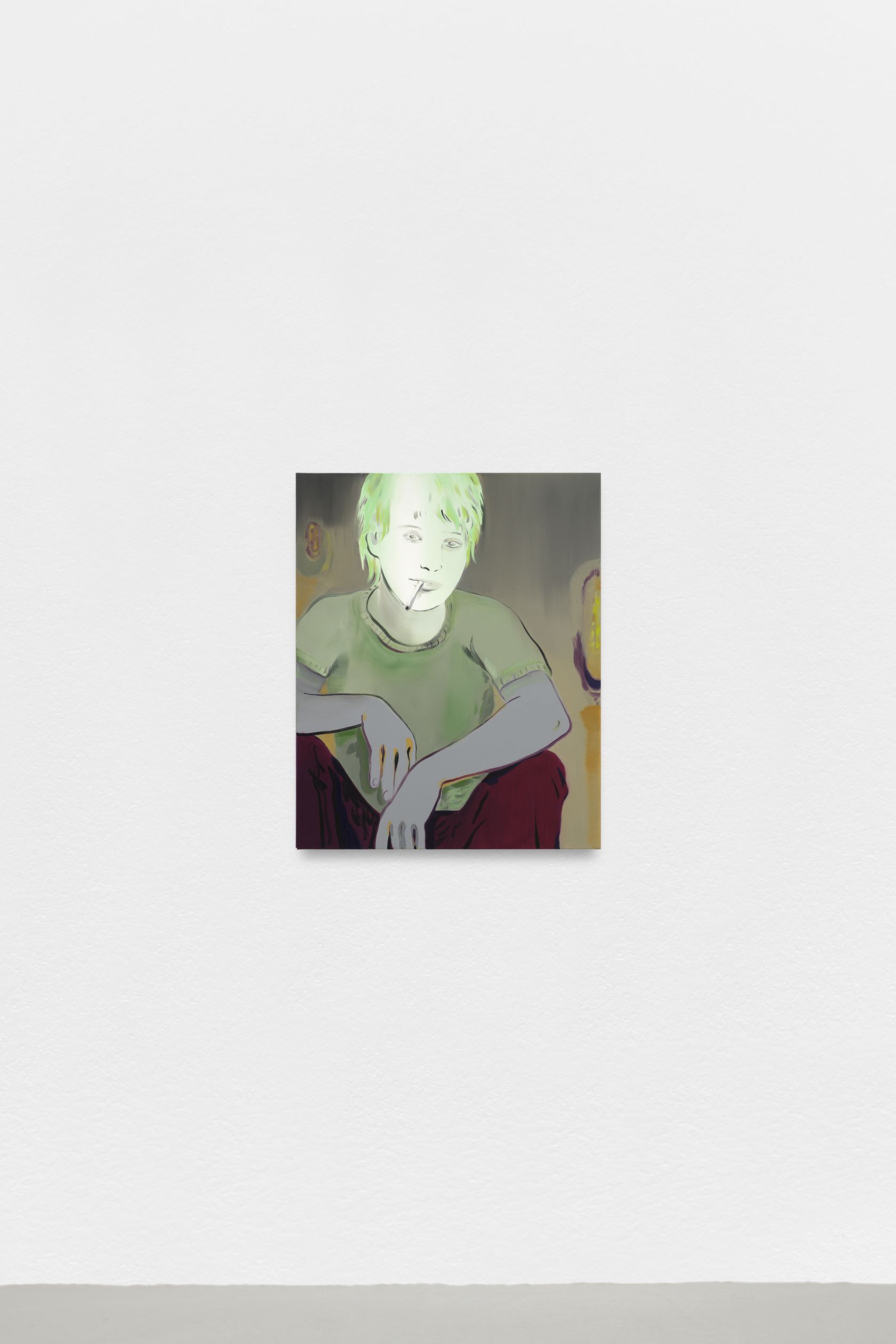
- Françoise Pétrovitch
- Sans titre , 2023
- Oil on canvas
-
- 100 ×
- 81 × cm
- 39 3/8 ×
- 31 7/8 × inches
Stefan Rinck’s stone figures form a motley and comical community of, for the most part, animals, chimeras and monsters. They wear costumes and masks; are endowed with particular symbols or characteristics, some bear the names of heroes of Greek mythology or of legend. Rinck’s sculpted figures make up a discordant but related assembly of non-humans: they come from elsewhere, an archaic imaginary world, woven from myths and legends. With his collection of fauna, the artist is exploring a comical, imaginary yet realistic vein, breathing new life into its iconography, using a technique typical of the Middle Ages: sculpting his figures directly from stone.
Rinck’s sculptures remind us of the figures of Roman art, which populate the columns and tympana of churches. They share the same morphology and style, the hybrid aspect of the chimera and monster. These are grotesque figures, in which we recognize the vitalist comedy typical of medieval realism which could be observed during the parades of jesters and buffoons at religious and popular festivities. Yet if the Middle Ages seem to color Rinck’s art, its frame of reference in fact crystalizes around a number of “Gothic” obsessions of the Romantic kind: a taste for mythology and folk tales, for different epochs and cultures for the fantastic or figures of hubris and excess.
Stefan Rinck’s work has been subject to many exhibitions in Athens, Berlin, Brussels, Los Angeles, Madrid, Munich, Paris and features in the collections of the Frac Corse, Corte, (FR), the CBK Rotterdam (NL) and the Museum De Hallen, Haarlem (NL). In 2018, the work The mangust of Beauvais is installed permanently in the city of Paris at 53-57 rue de Grennelle (Beaupassage). In 2019, Stefan Rinck is part of the 100 Sculptors of Tomorrow published by Thames & Hudson.
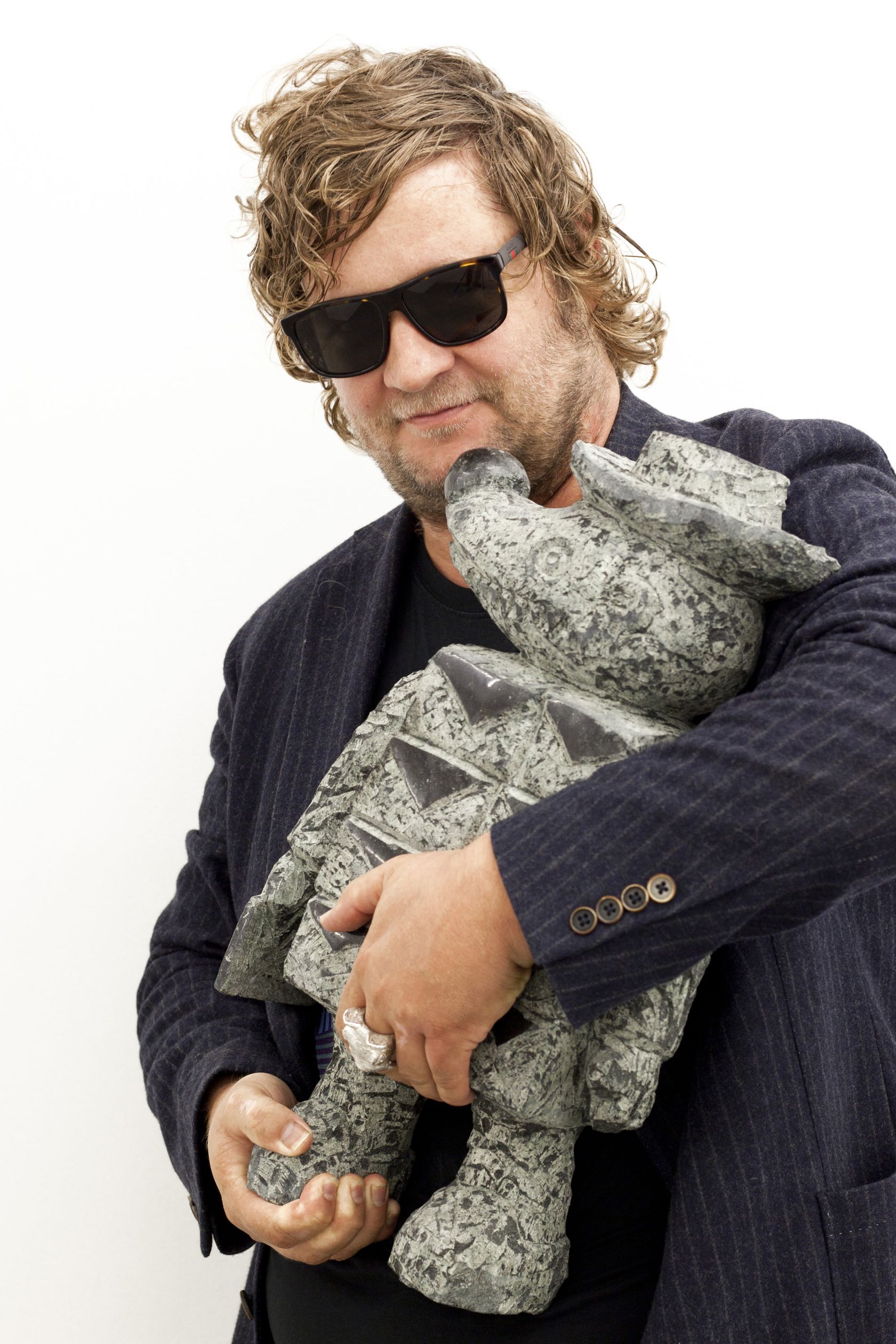
Moffat Takadiwa creates large format sculptures from materials found on garbage dumps, notably computer parts, plastic bottle-caps, toothbrushes and toothpaste tubes. After gathering great quantities of these objects and sorting them by color and shape, the artist weaves these discarded scraps into rich wall hangings. Once suspended, these post-industrial fabrics, through their intricate beauty, acquire an aura of ritual or totemic artifacts.
Born in 1983, Moffat Takadiwa lives and works on the outskirts of Harare in Mbare, one of the largest recycling centers in the country and an important hub for the informal economy. Belonging to the post-independence generation, his work reflects his preoccupation with issues such as consumerism, inequality, post-colonialism and the environment. Since the earliest days of his artistic career, he has used his practice as a platform for the rehabilitation of his community, working with young local artists and designers, with a view to founding the world first artistic center based on the use of reclaimed materials.
The National Gallery of Zimbabwe, Harare, staged a major solo exhibition of Moffat Takadiwa in 2023. In 2024, he had his first solo exhibition in a French institution at the Galerie Édouard Manet, Gennevilliers, and represents Zimbabwe at the 60th Biennale di Venezia alongside five other artists. He exhibited his works in major institutions abroad as well, most notably at the Craft Contemporary (US), during the exhibition organized by Jeffrey Deitch and Gagosian at the Moore Building in Miami (US), at the ARoS Kunstmuseumat, Aarhus (DK), the MACAAL, Marrakesh (MA) and the Arnhem Museum (NL).
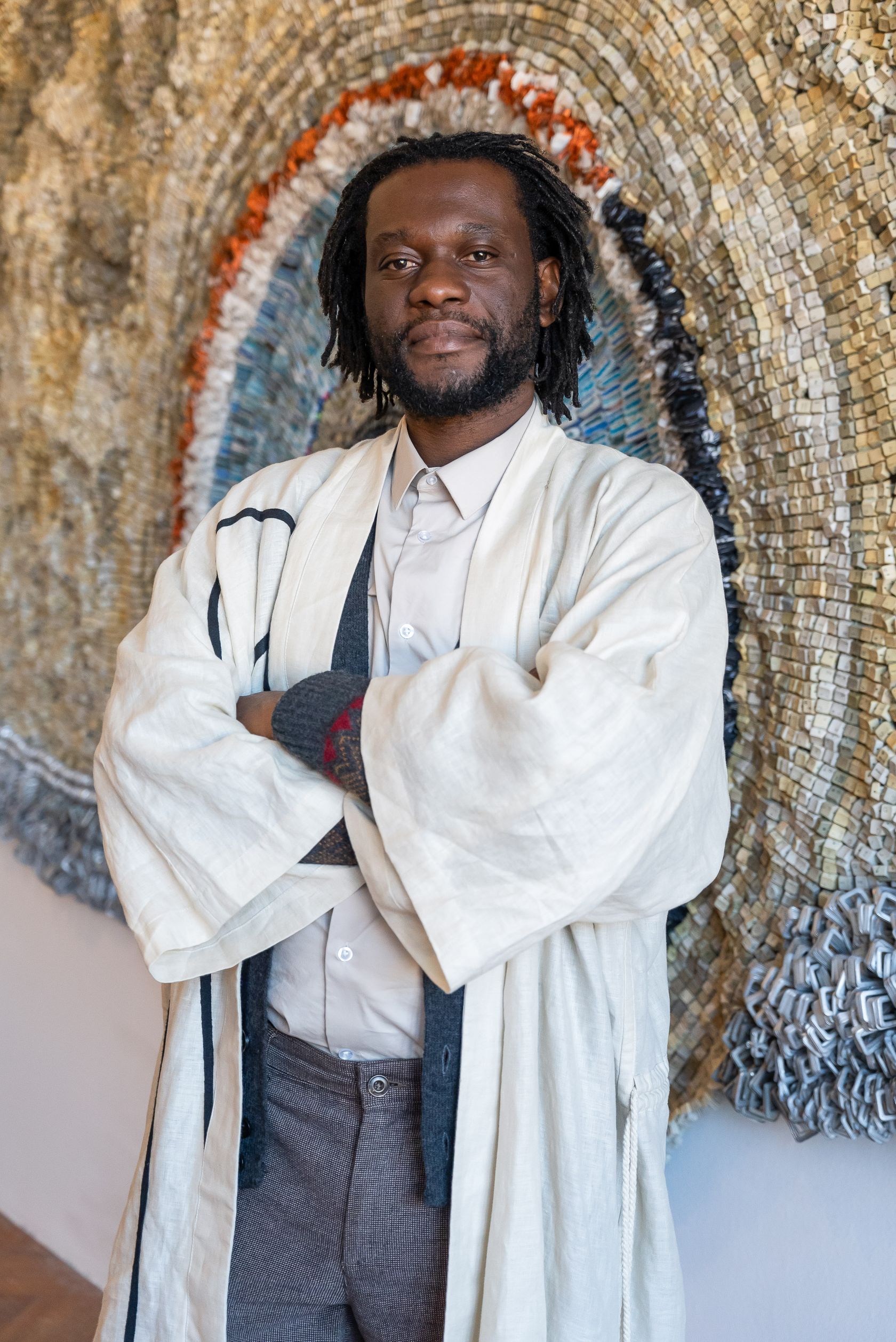
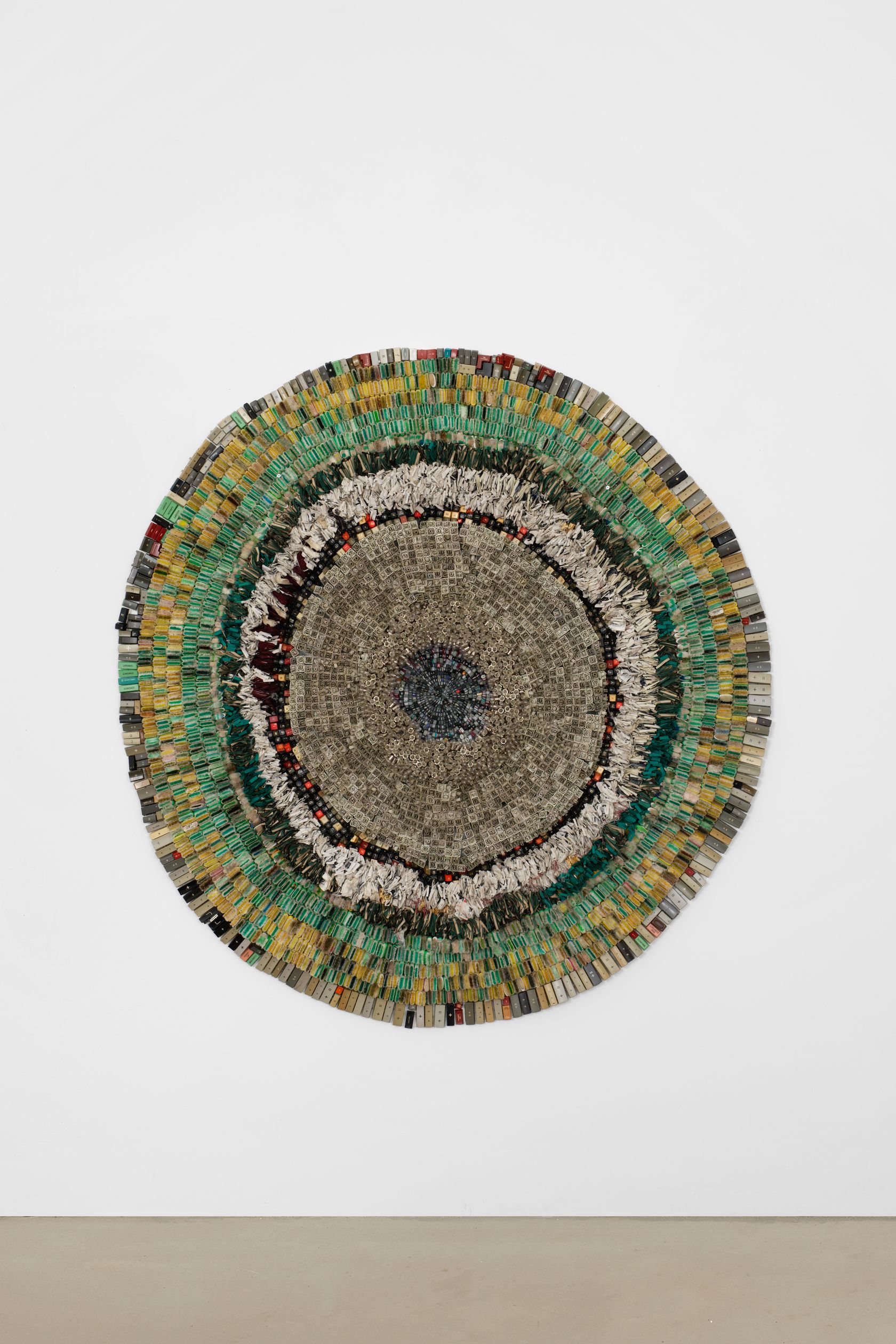
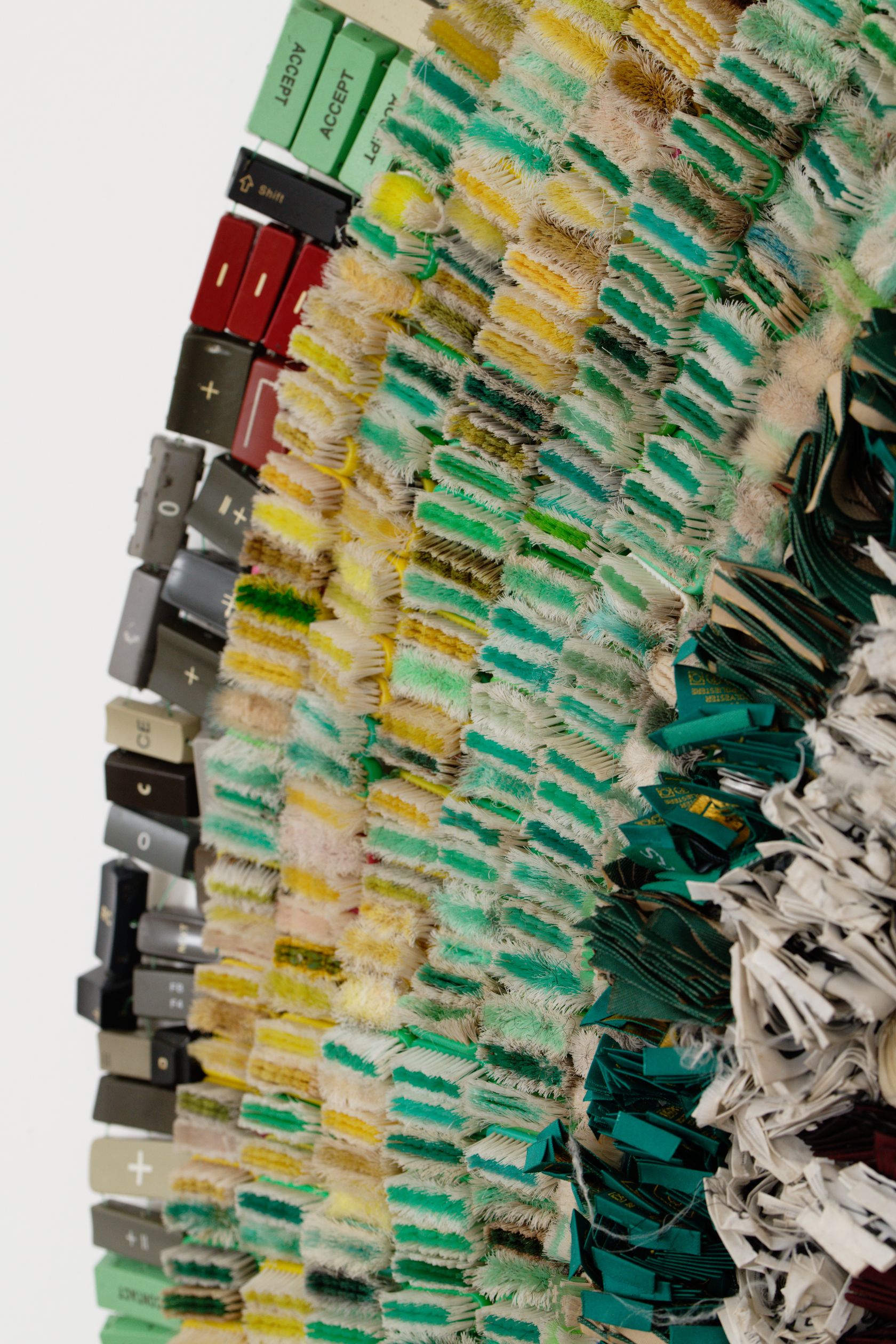
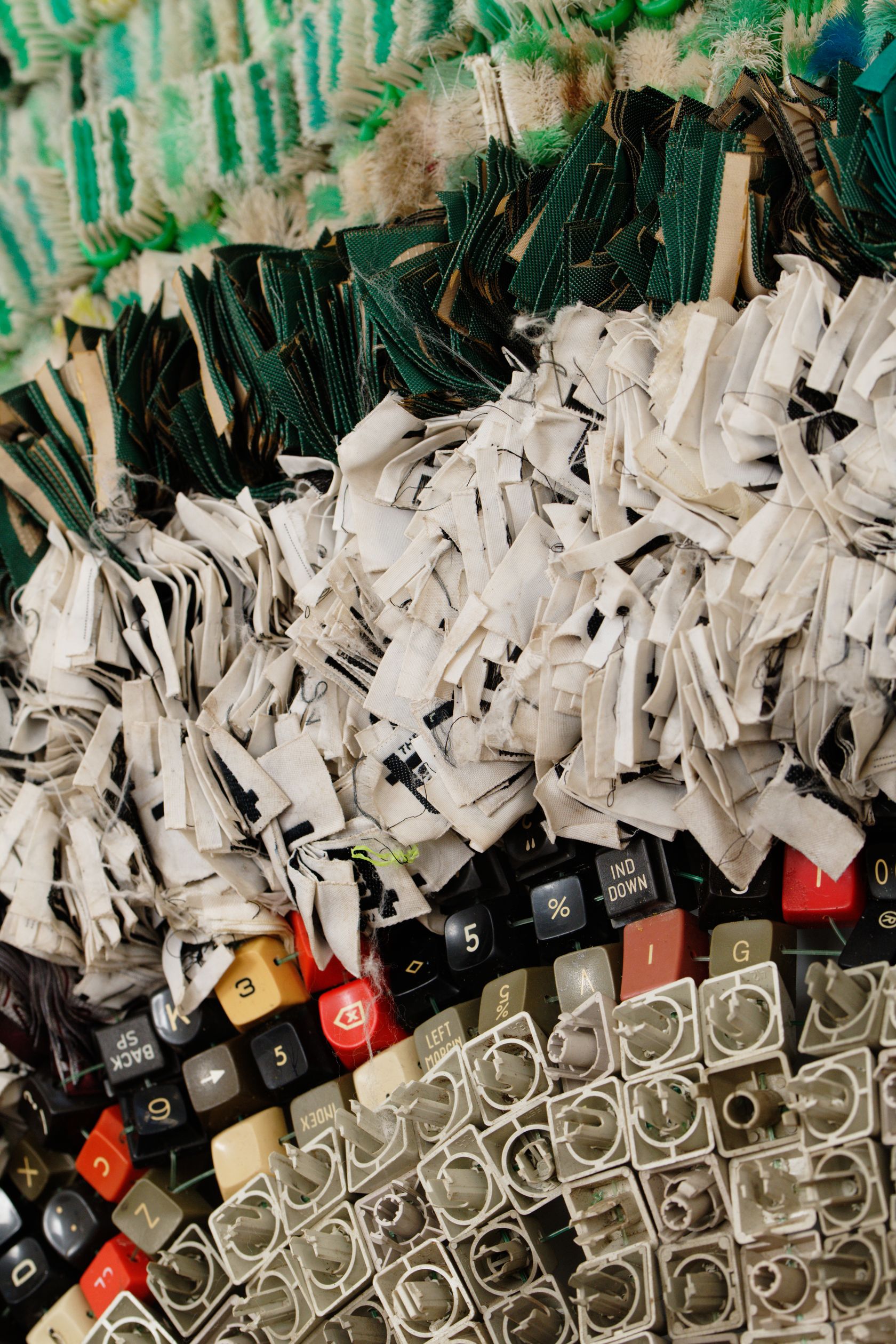
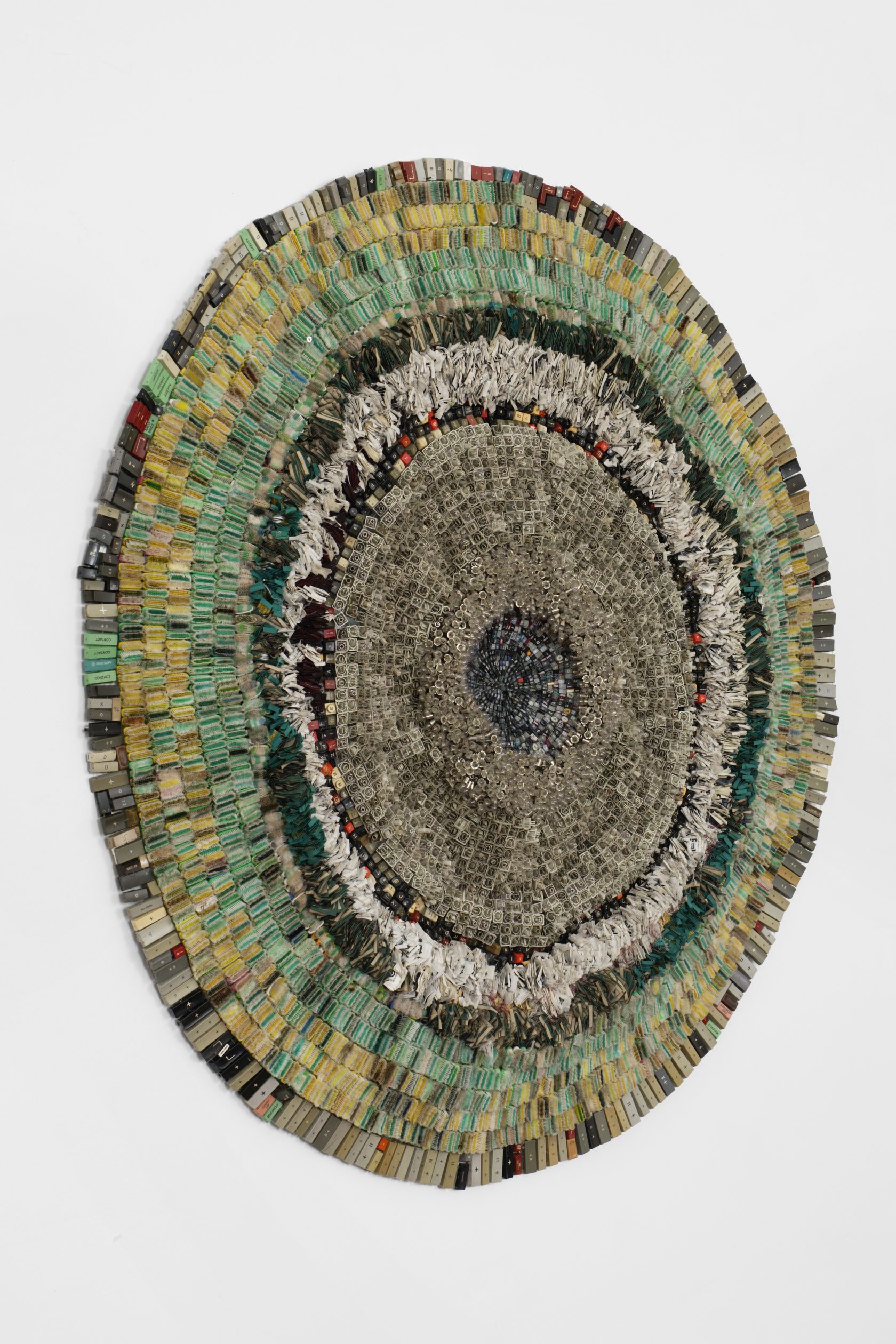
- Moffat Takadiwa
- Cotton from Gokwe , 2024
- Toothbrushes, clothing tags, calculator keys, car bulbs
-
- 8 ×
- 160 × cm
- 3 1/8 ×
- 63 × inches
Within their practice, Gert and Uwe Tobias have revived a wide range of traditional image-making techniques—woodcut printing, low-relief sculpture, drawing using typewriters, watercolor, gouache, ceramics and lacemaking—into which they breathe new life using contemporary means. Their oeuvre is mainly influenced by the myths, costumes, crafts and commonplace motifs of their native Transylvania, subverted and fused with elements of popular culture, abstract art and contemporary graphic design. From this rich pictorial repertoire, they create a varied body of work in which legends and folk tales, carnivalesque figures and archaic elements are subject to constant metamorphoses.
Born in Romania in 1973, the twin brothers Gert and Uwe Tobias have been developing a collaborative practice since 2001. Their four-handed work bears witness to the perfect symbiosis of their individual gestures, striving towards a common goal. Today, they live and work in Cologne, Germany. The twin brothers have recently enjoyed exhibitions at the MoMA in New York, the Sprengel Museum in Hannover and the Pinakothek der Moderne, Munich, both in Germany, The Dhondt-Dhaenens Museum in Deurle, Belgium, the Whitechapel Gallery in London, the Kunstmuseum Ravensburg, Germany, the Kupferstichkabinett at the Staatliche Kunstsammelungen in Dresden, the Maramotti Collection in Reggio Emilia in Italy and the UCLA, Hammer Museum of Art in Los Angeles as well as many other venues. In 2022, they were awarded the Prix du Dessin (Drawing Prize) by the Fondation d’Art Contemporain Daniel et Florence Guerlain.
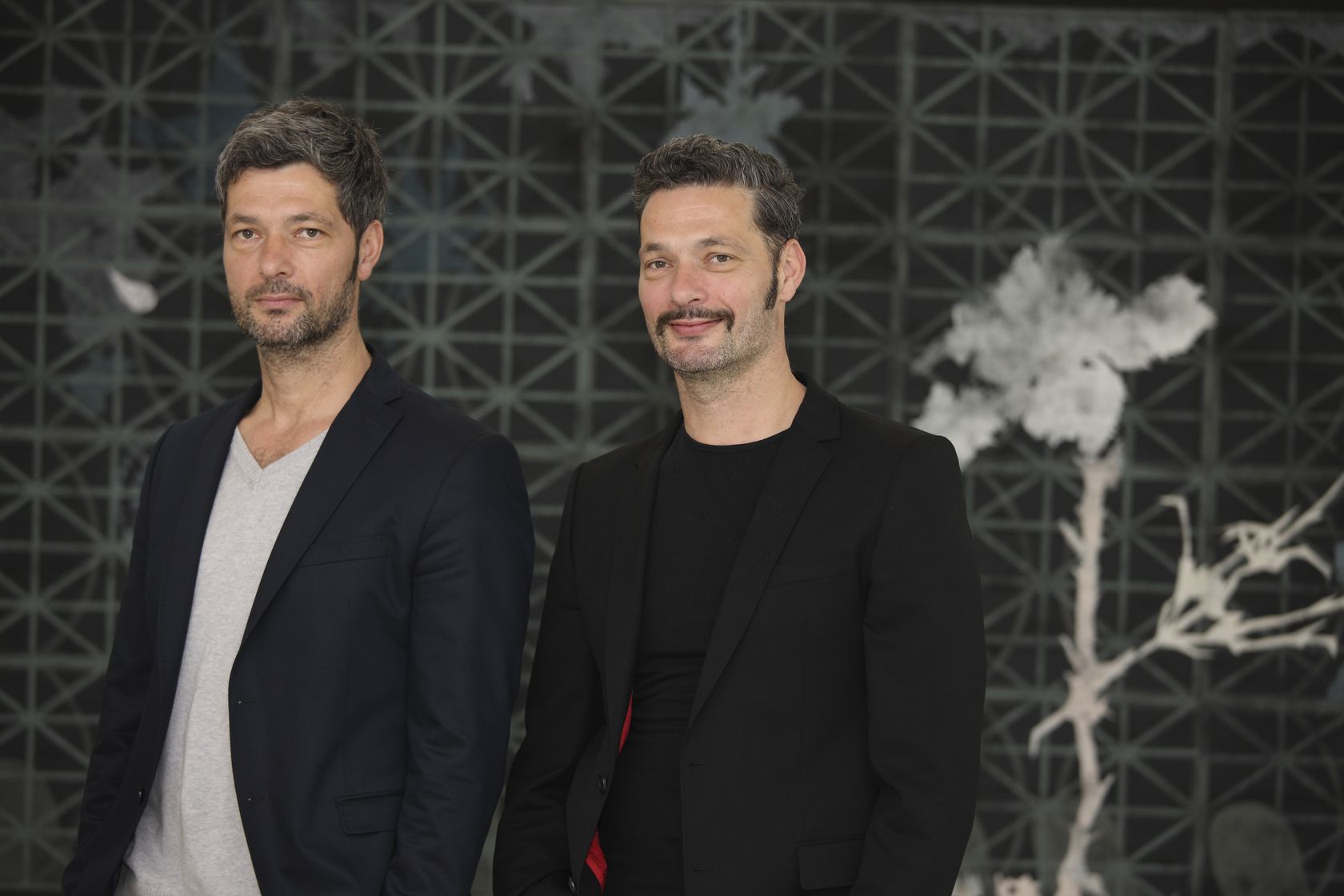
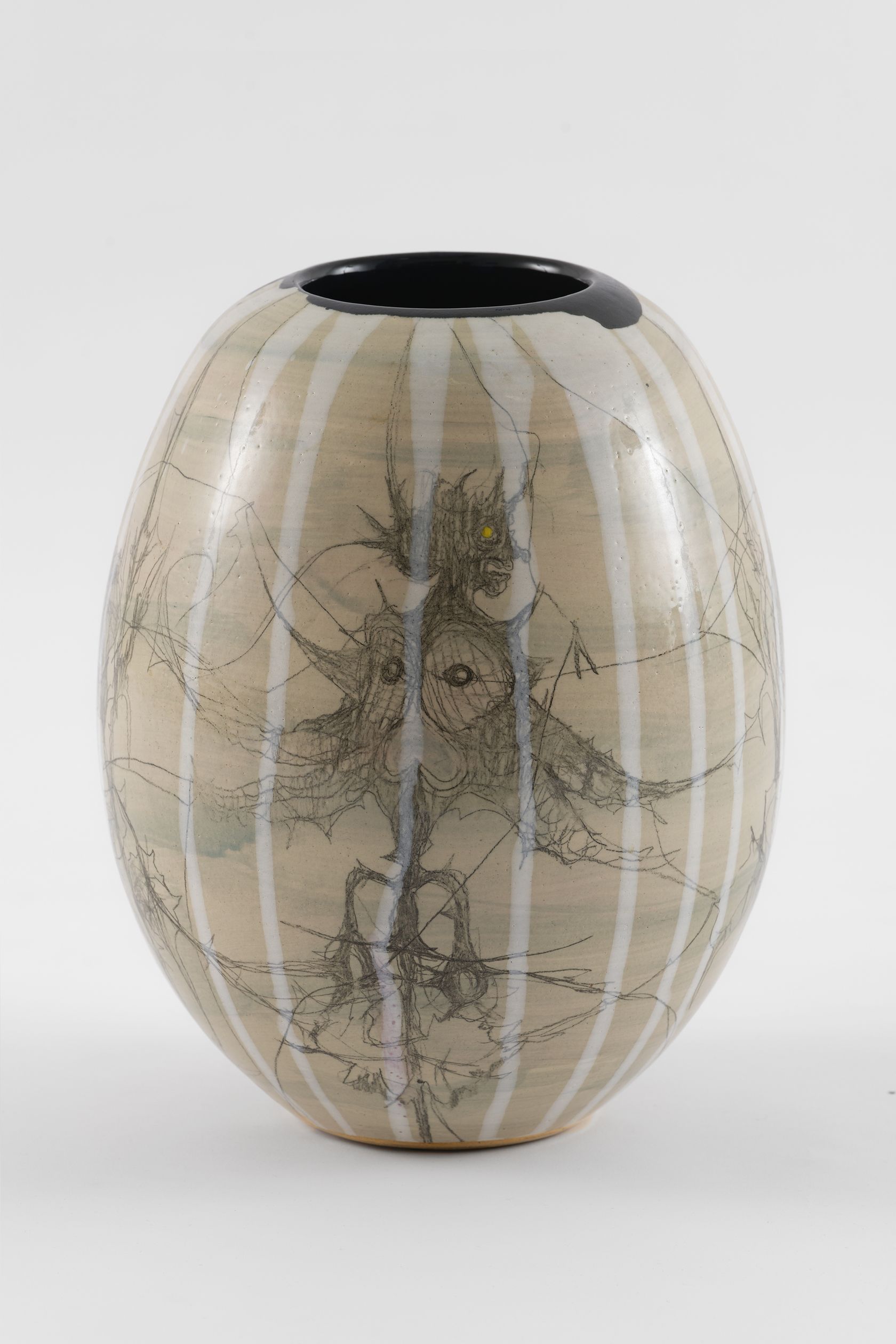
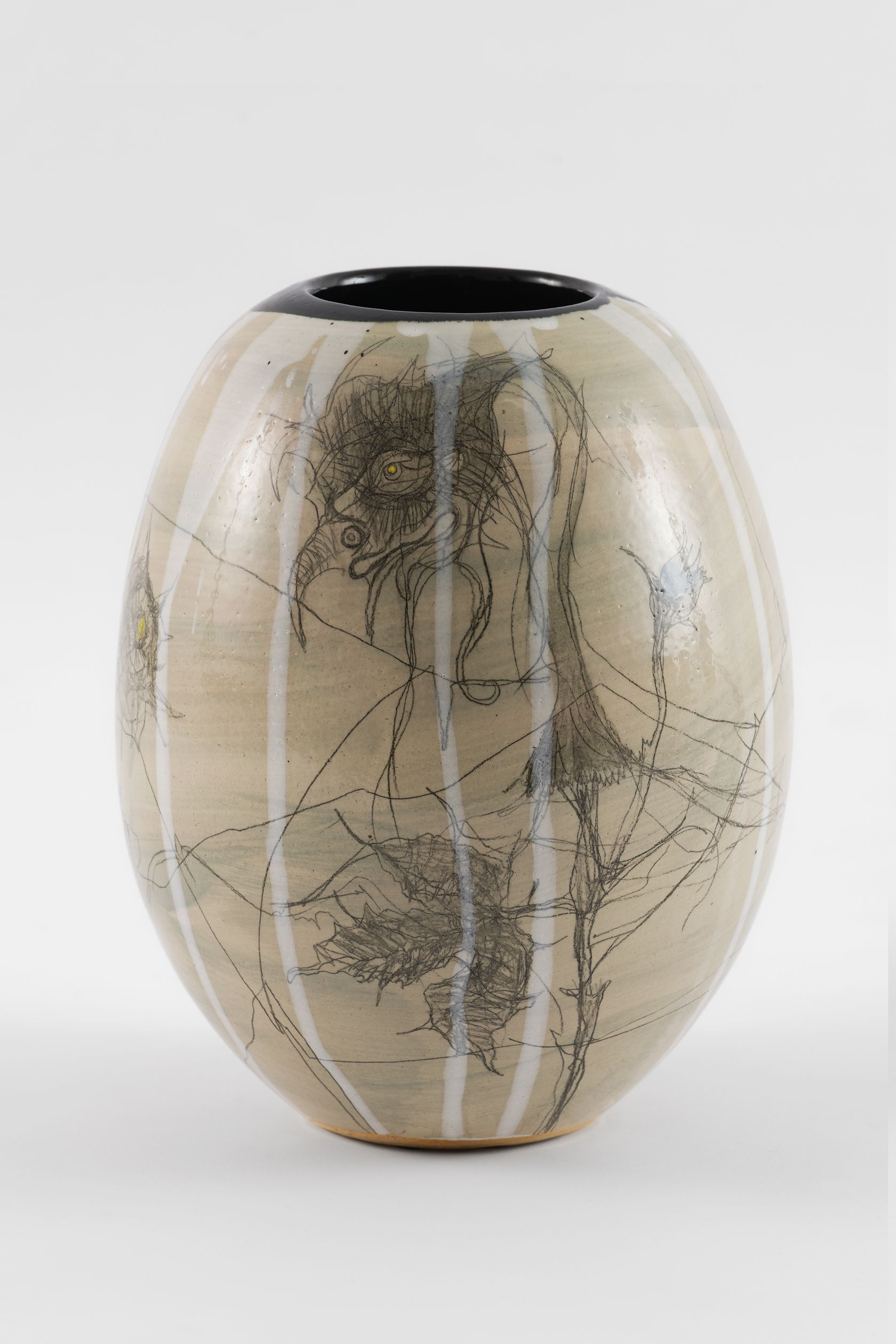
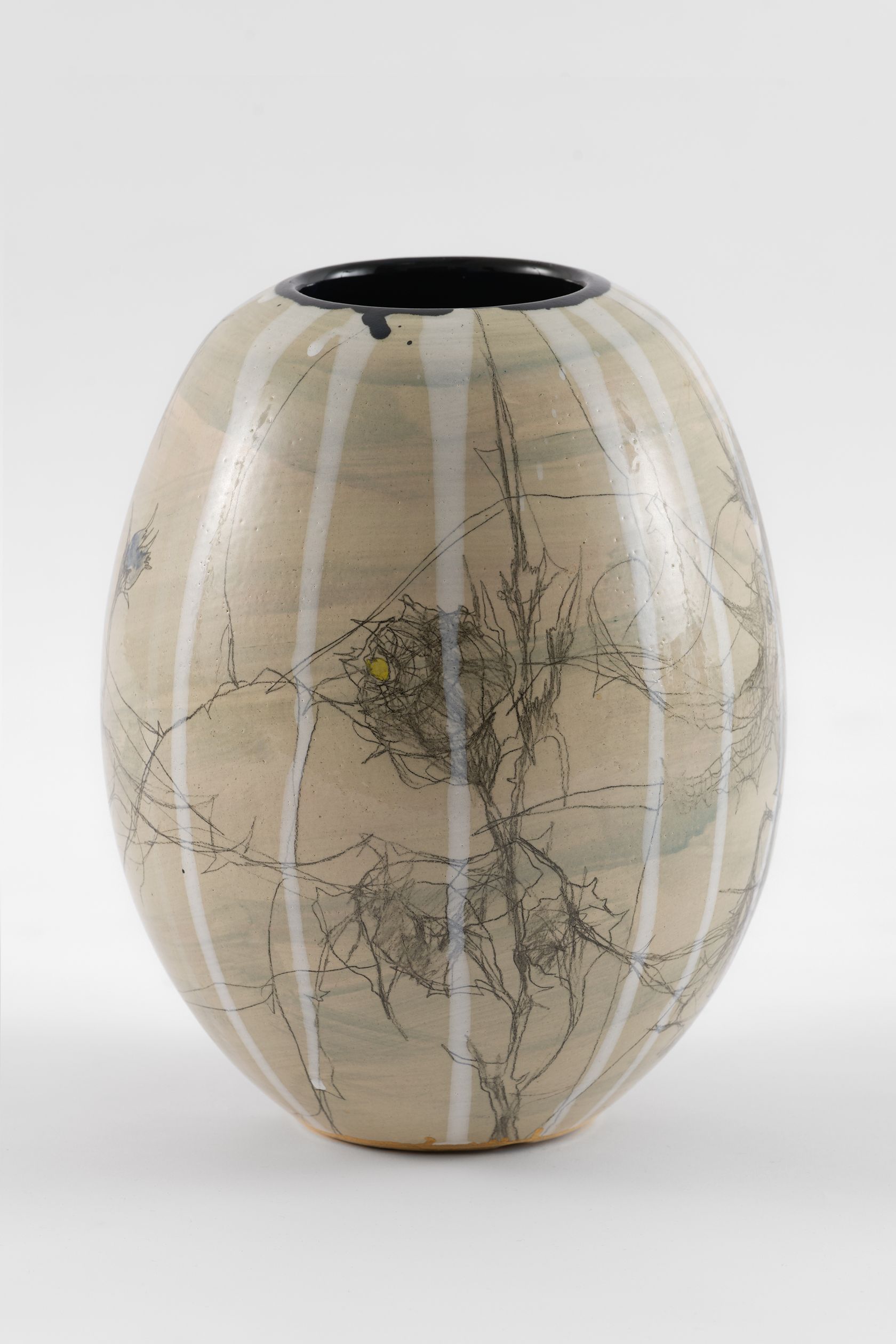
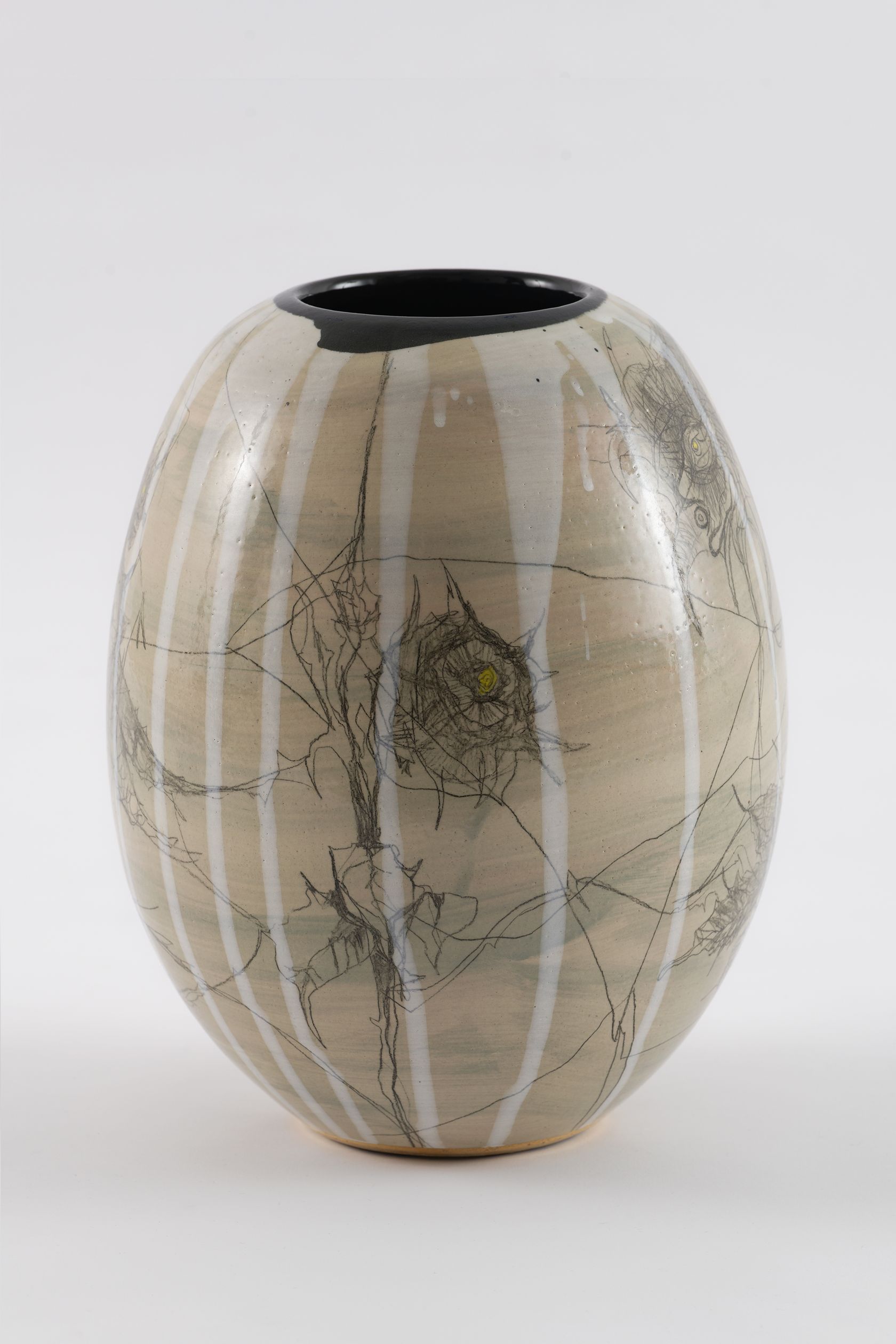
- Gert & Uwe Tobias
- Untitled , 2017
- Ceramic
-
- 33.5 ×
- 26 × cm
- 13 3/16 ×
- 10 1/4 × inches
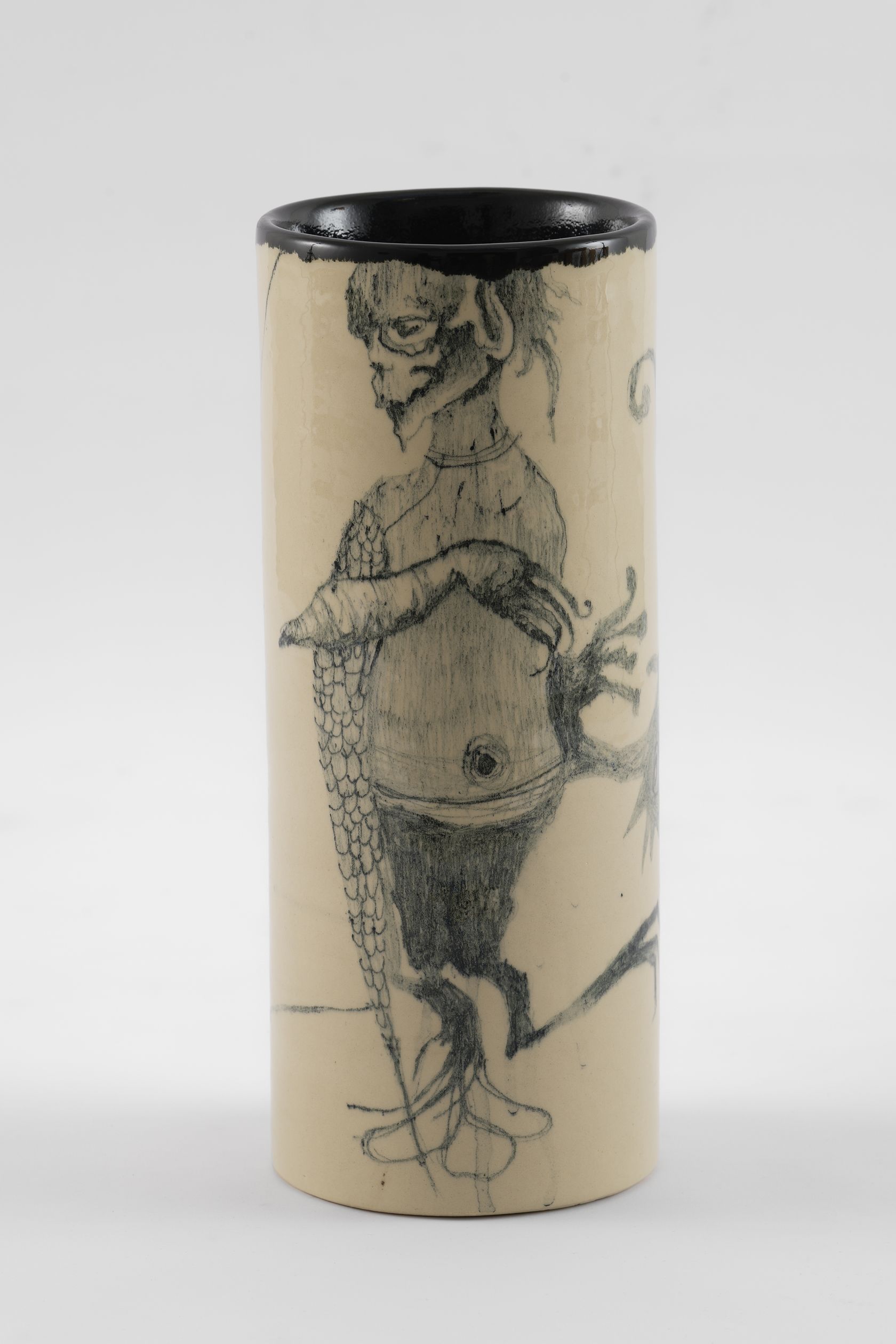
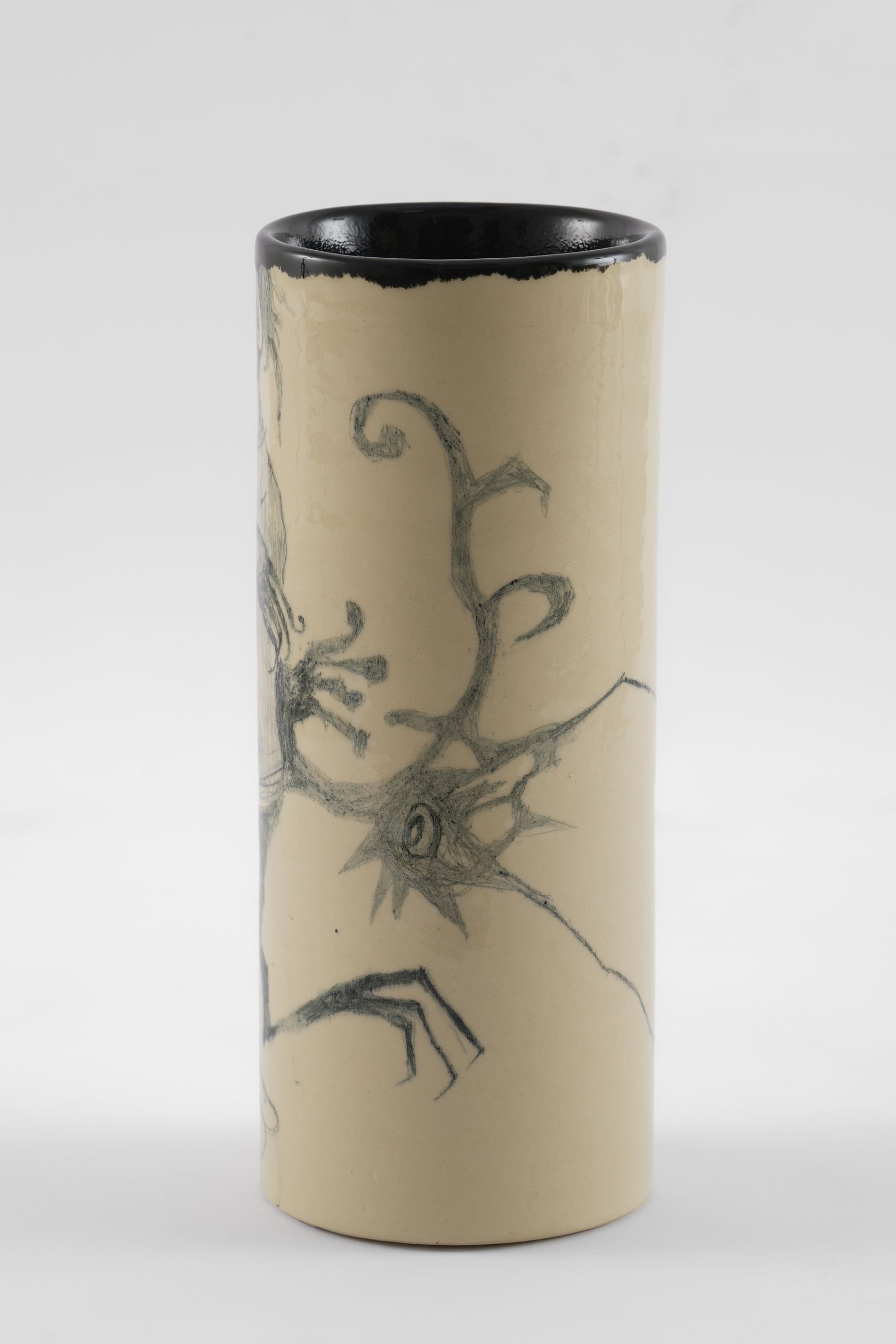
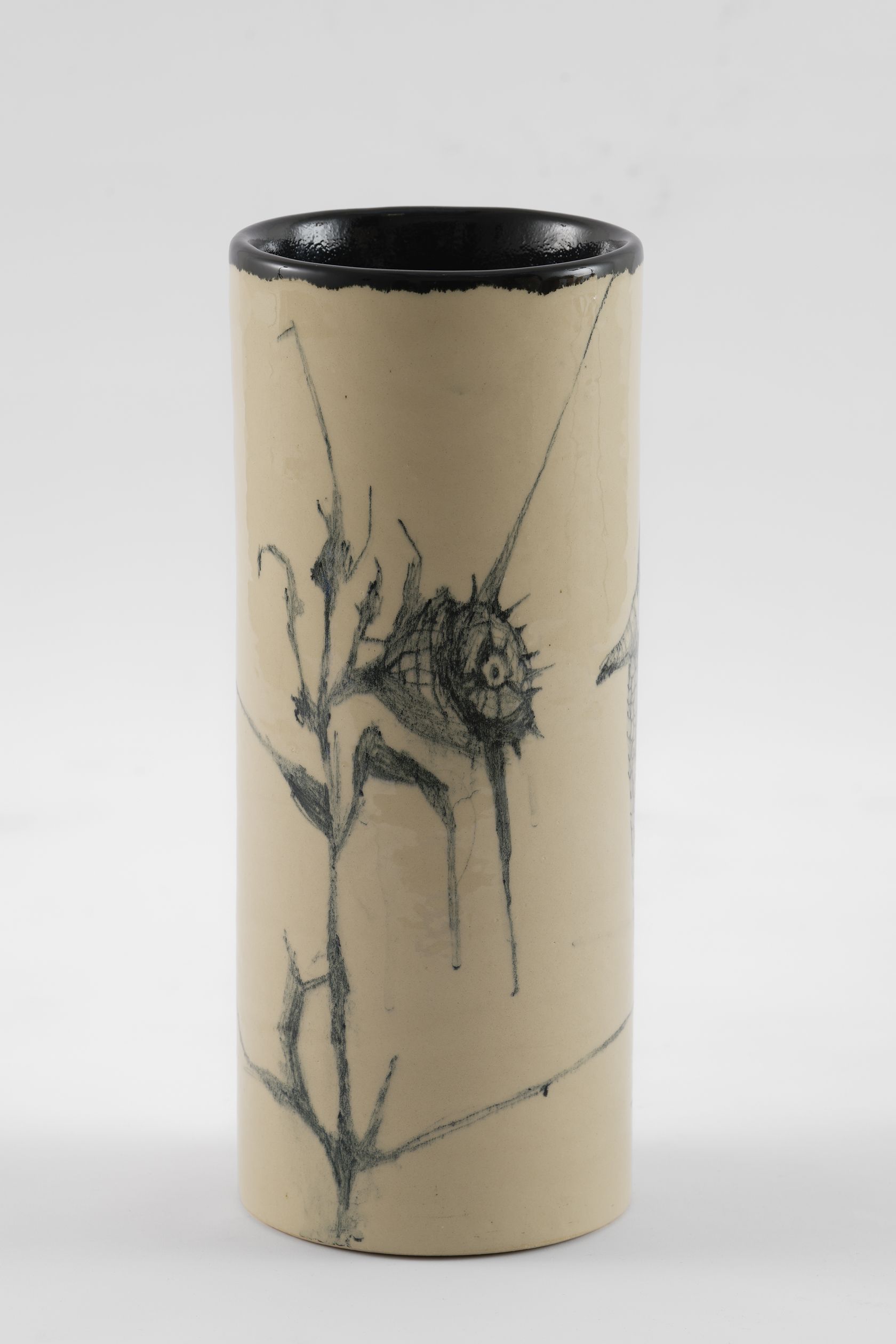
- Gert & Uwe Tobias
- Untitled , 2019
- Glazed ceramic
-
- 43 ×
- 17 × cm
- 16 15/16 ×
- 6 11/16 × inches

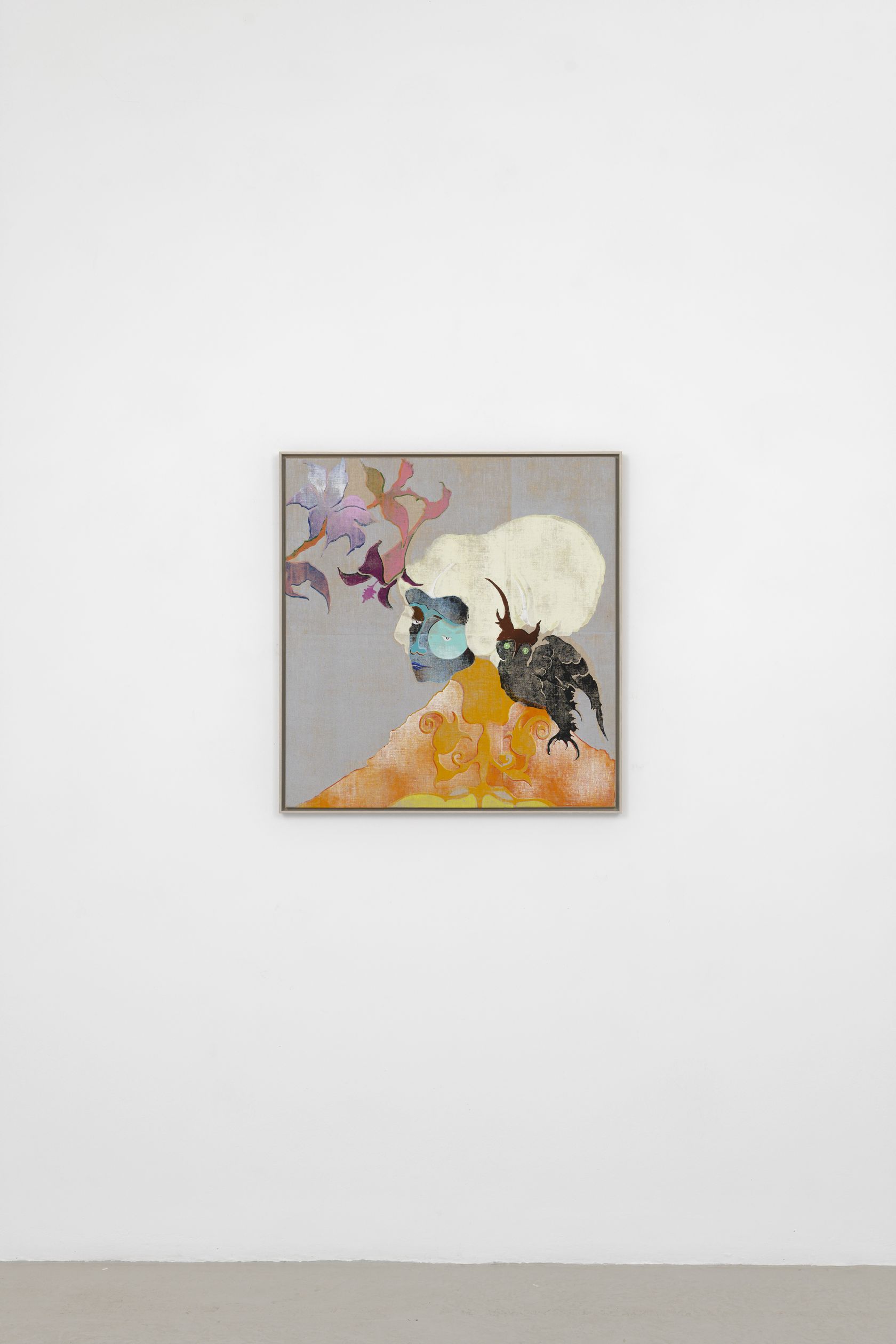
- Gert & Uwe Tobias
- Untitled , 2017
- Coloured woodcut on canvas
-
- 90 ×
- 85 × cm
- 35 7/16 ×
- 33 7/16 × inches
- unframed
- 93.2 ×
- 88.5 ×
- 4 × cm
- 36 11/16 ×
- 34 13/16 ×
- 1 9/16 × in
- framed
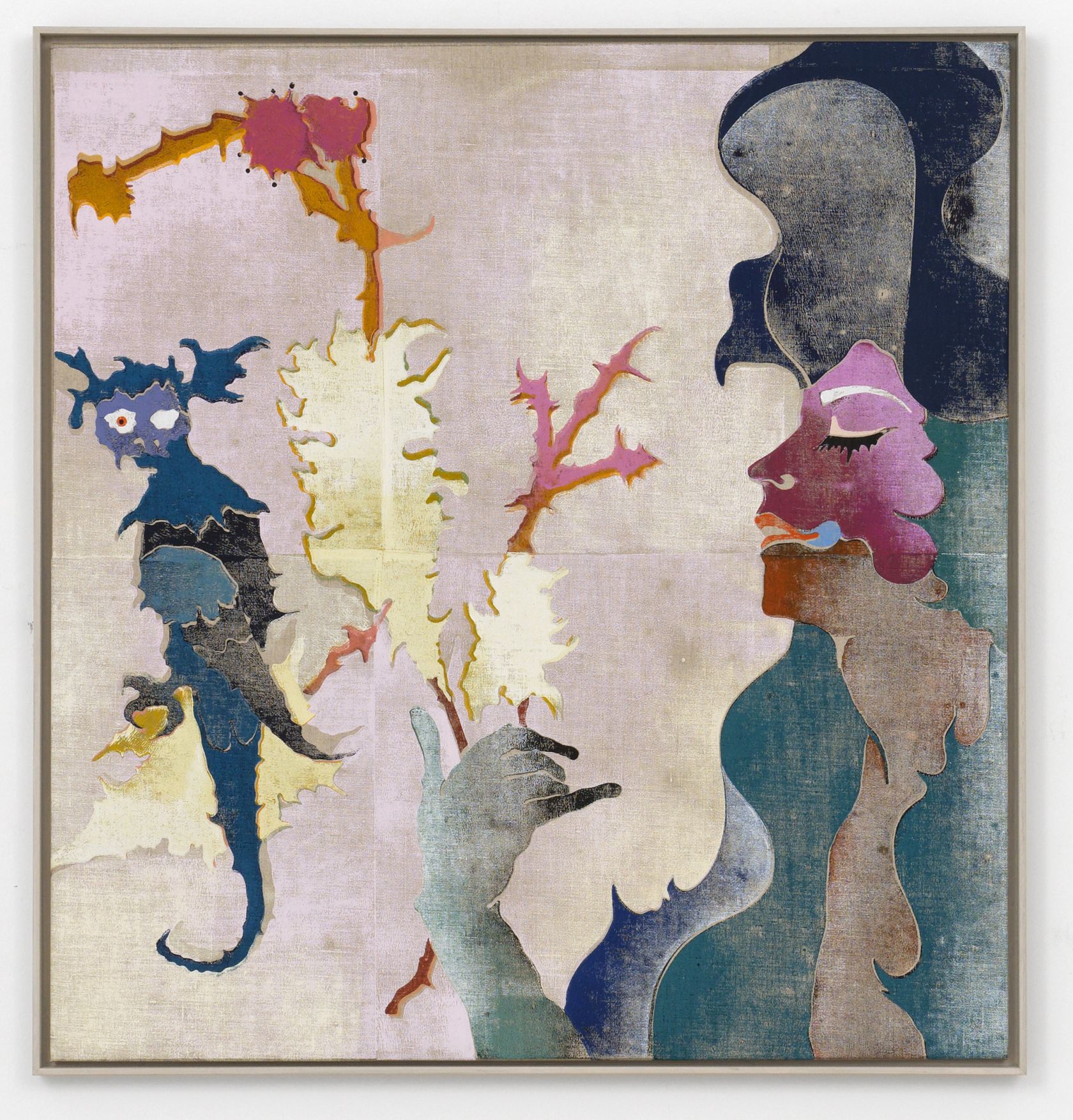
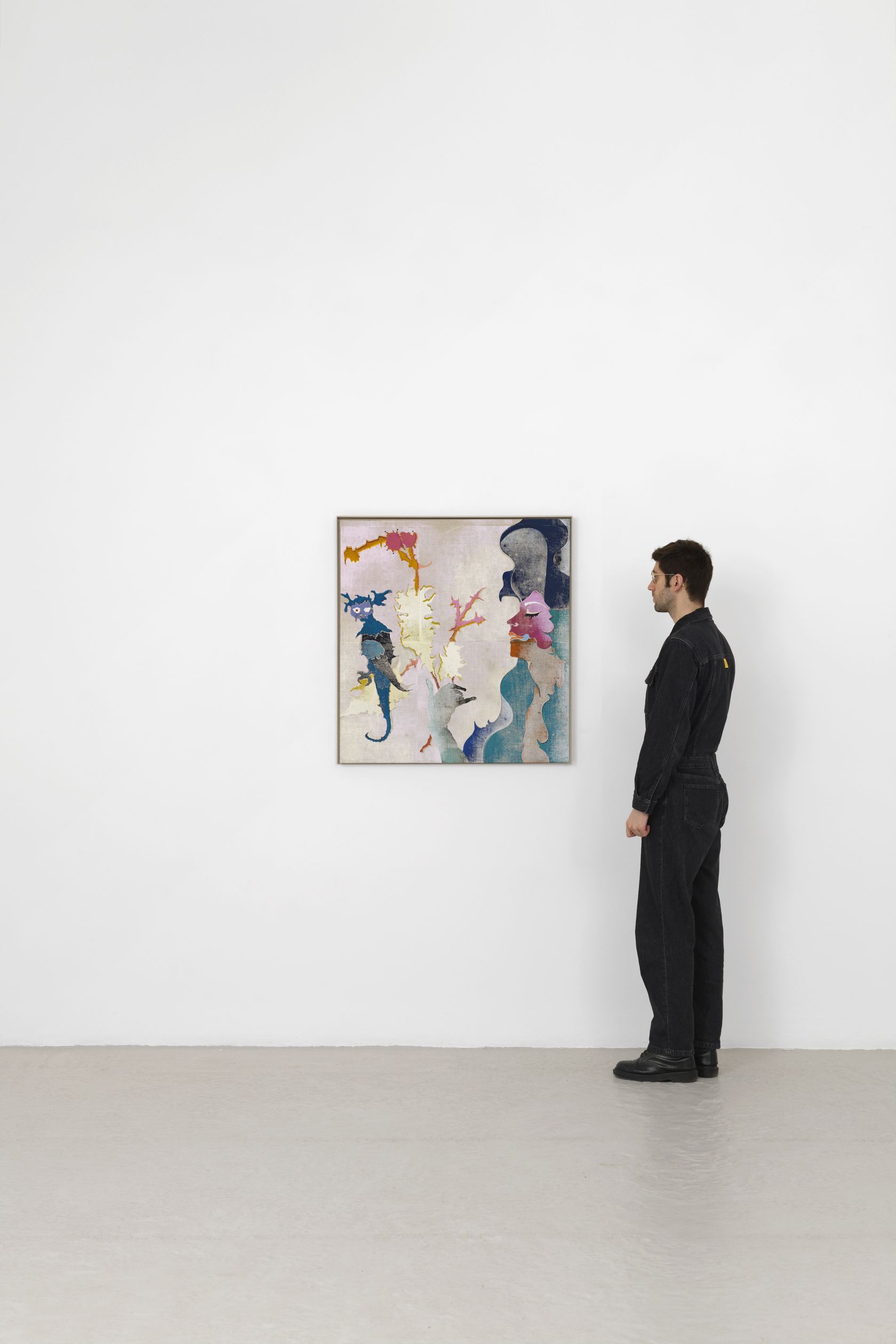
- Gert & Uwe Tobias
- Untitled , 2017
- Coloured woodcut on canvas
-
- 90 ×
- 85 × cm
- 35 7/16 ×
- 33 7/16 × inches
- unframed
- 93.2 ×
- 88.5 ×
- 4 × cm
- 36 11/16 ×
- 34 13/16 ×
- 1 9/16 × in
- framed
Xie Lei chose painting through personal conviction, as it opens up a pathway towards a language capable of expressing his sensory universe and a field of experimentation that allows him to delve into the specificity of this medium in the contemporary world. His work always starts with a basis in reality before taking flight to explore uncertain or ambiguous realms that are transformed by his imagination. Most of his paintings refer to murky or disturbing situations, discreetly linked to literary or cinematographic memories or drawn from a profound crucible of personal emotions. His work dwells on the complexity of events and situations and above all their ambiguity and the tensions they foster. His recent painting intrigues through its exploration of a world in-between sleep and death, torment and eroticism. The colors are somber but shift towards the luminous and the powerful. His touch is both fluid and more textured. Xie Lei’s painting is singular in that it offers up an alternative perception of time: in a salutary manner, it suggests a slowing of the spectator’s gaze and an escape from the intoxicating world of immediacy and constant acceleration.
Xie Lei (b. 1983 in China) has lived and worked in Paris since 2006. He graduated from the CAFA in Beijing then the ENSBA in Paris. His works have been exhibited in numerous institutions: Louis Vuitton Foundation, Paris (FR); MO.CO, Montpellier (FR); CAPC, Bordeaux (FR); Villa Noailles, Hyères (FR); Collection Lambert, Avignon (FR); MAC VAL, Vitry-sur-Seine (FR); Langen Foundation, Neuss (DE); Musée National d’Histoire d’Immigration, Paris (FR); Ricard Foundation, Paris (FR). His oeuvres feature in many public and private collections such as the Thyssen-Bornemisza Art Contemporary, MAC VAL, Albertina Museum and X Museum. Xie Lei was a resident of the Casa de Velázquez, the Boghossian Foundation and the Villa Medici.
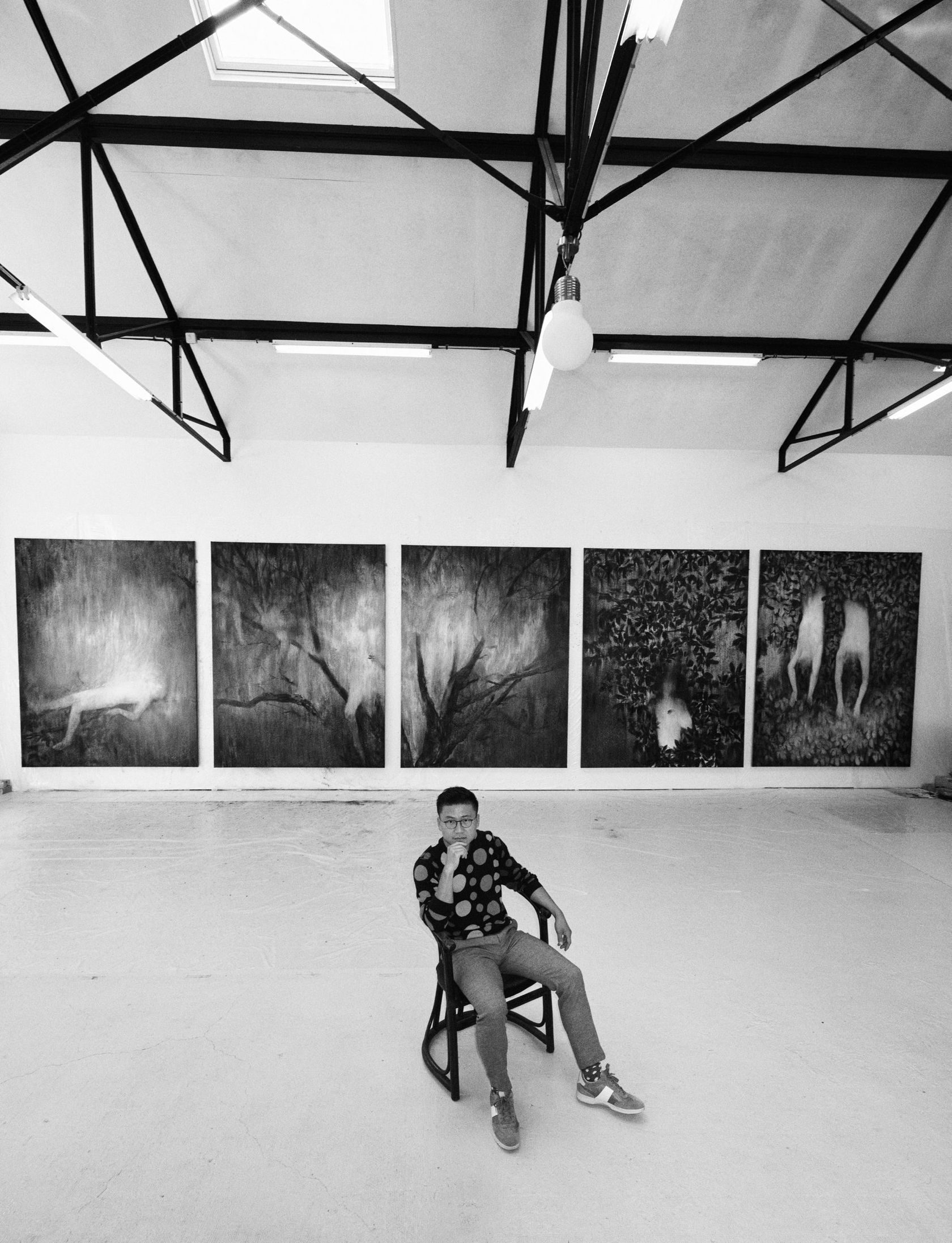
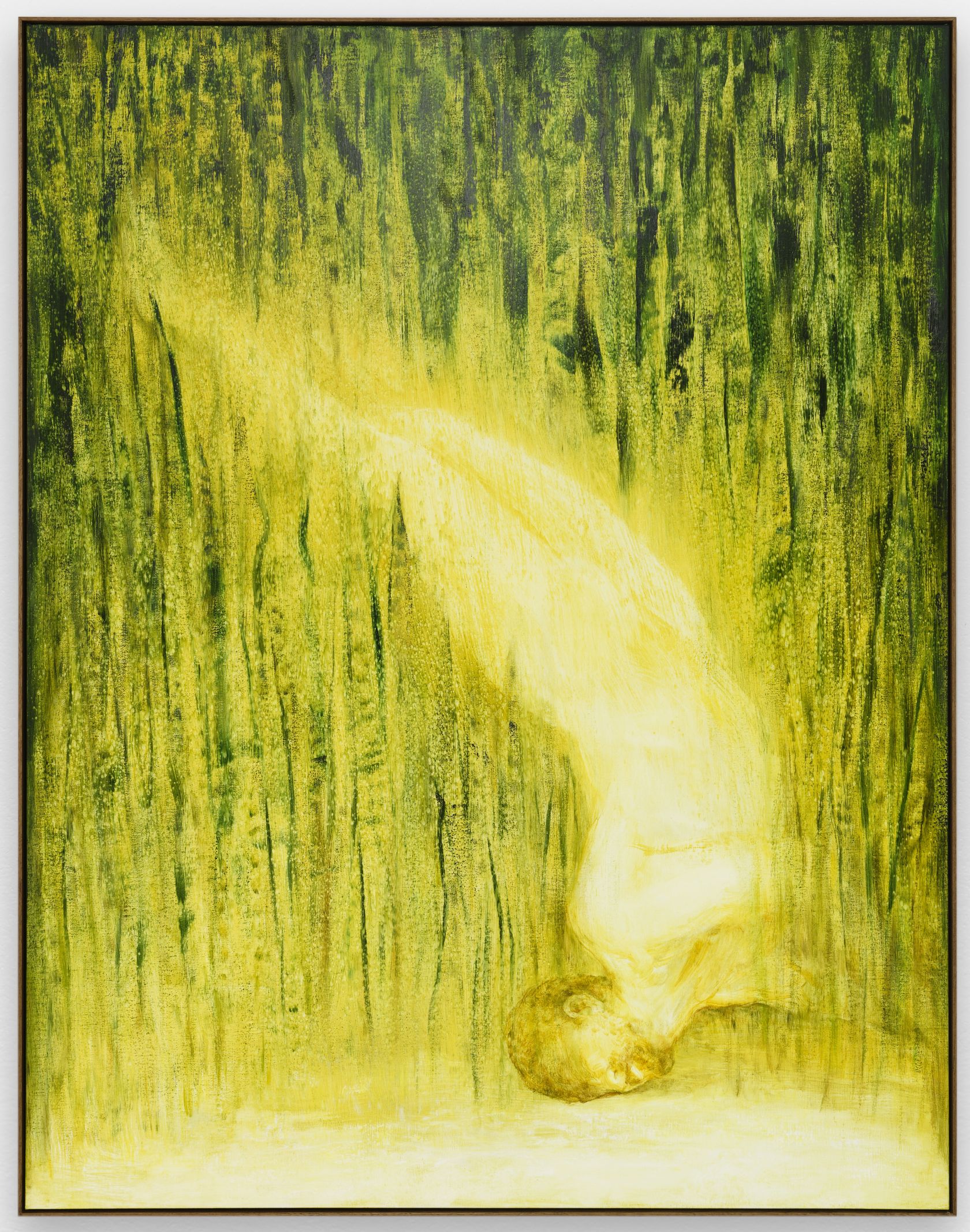
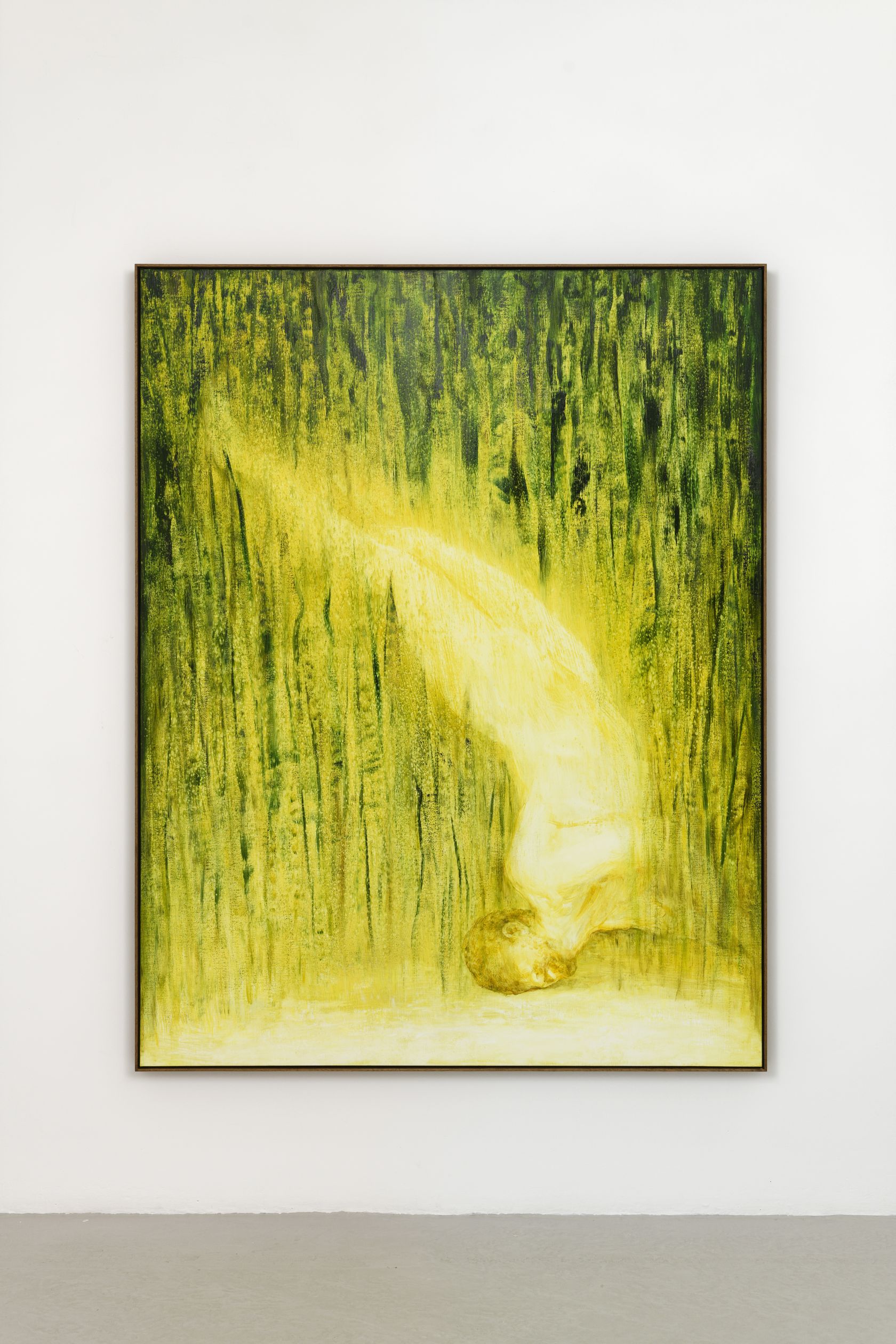
- Xie Lei
- Fertilizer , 2024
- Oil on canvas
-
- 205 ×
- 160 × cm
- 80 11/16 ×
- 63 × inches
- unframed
- 207.5 ×
- 162.5 ×
- 6.5 × cm
- 81 11/16 ×
- 64 ×
- 2 9/16 × in
- framed

